English colonialists liked to say “The sun never sets on the British Empire.” This was literally true by the early 20th century when British colonies spanned the globe. After World War II, a victorious but war-weary Britain could not prevent most of its colonies from going their own way. Check out the list below of the sovereign countries Britain once ruled, along with their dates of independence.
The British Empire in 1921
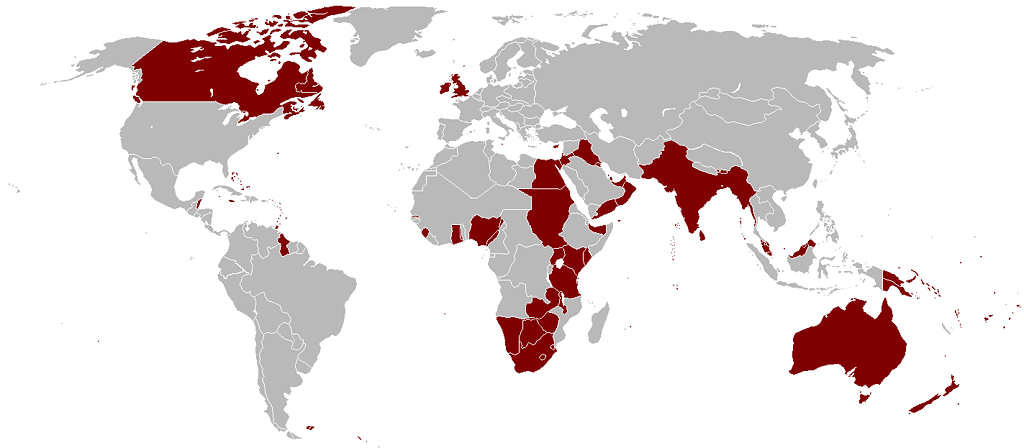
This map shows the British Empire in 1921 at its greatest geographic extent.
©By Vadac. - Own work., Public Domain, https://commons.wikimedia.org/w/index.php?curid=1436172 - License
The British Empire eventually took in about 25% of all the land on earth. It acquired its colonies through a mixture of military conquest, diplomacy, and co-opting local leaders for their purposes. In most cases, it eventually granted independence to its colonies rather than fighting losing wars to try to hold on to them.
1. Antigua and Barbuda (1981)
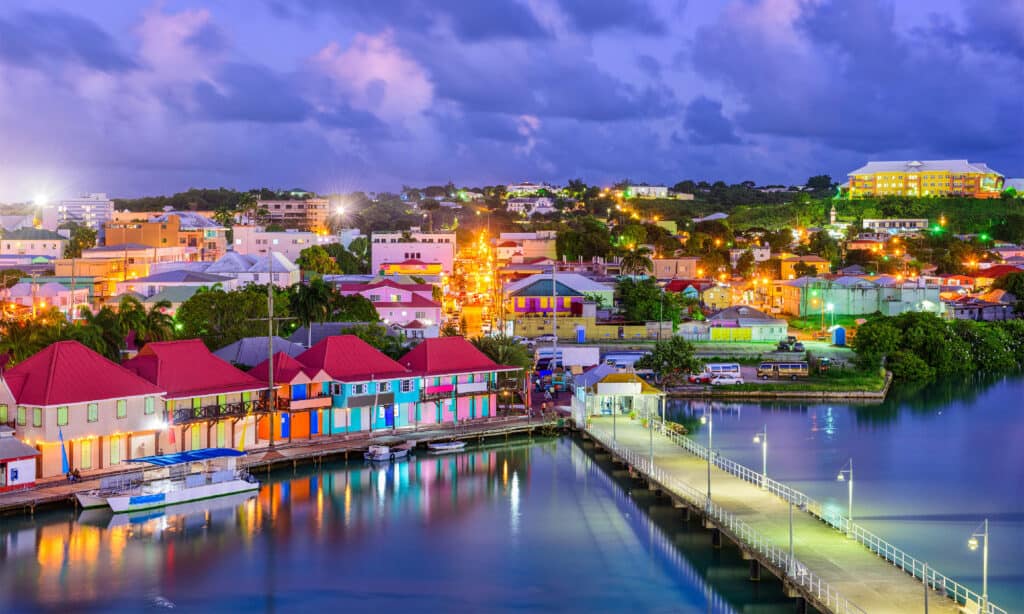
Saint John’s is the capital of Antigua and Barbuda.
©iStock.com/SeanPavonePhoto
The name “Antigua and Barbuda” comes from its two main islands. It is a popular tourist destination with rainforests and beaches on the Atlantic and Caribbean.
2. Australia (1958)

Australia is famous for its iconic wildlife, such as the koala.
©iStock.com/Maridav
One of the most distant British colonies, Australia is both a country and a continent. Due to its isolation from the rest of the world for most of its history, it evolved unique animal life and human cultures.
3. Bahamas (1973)
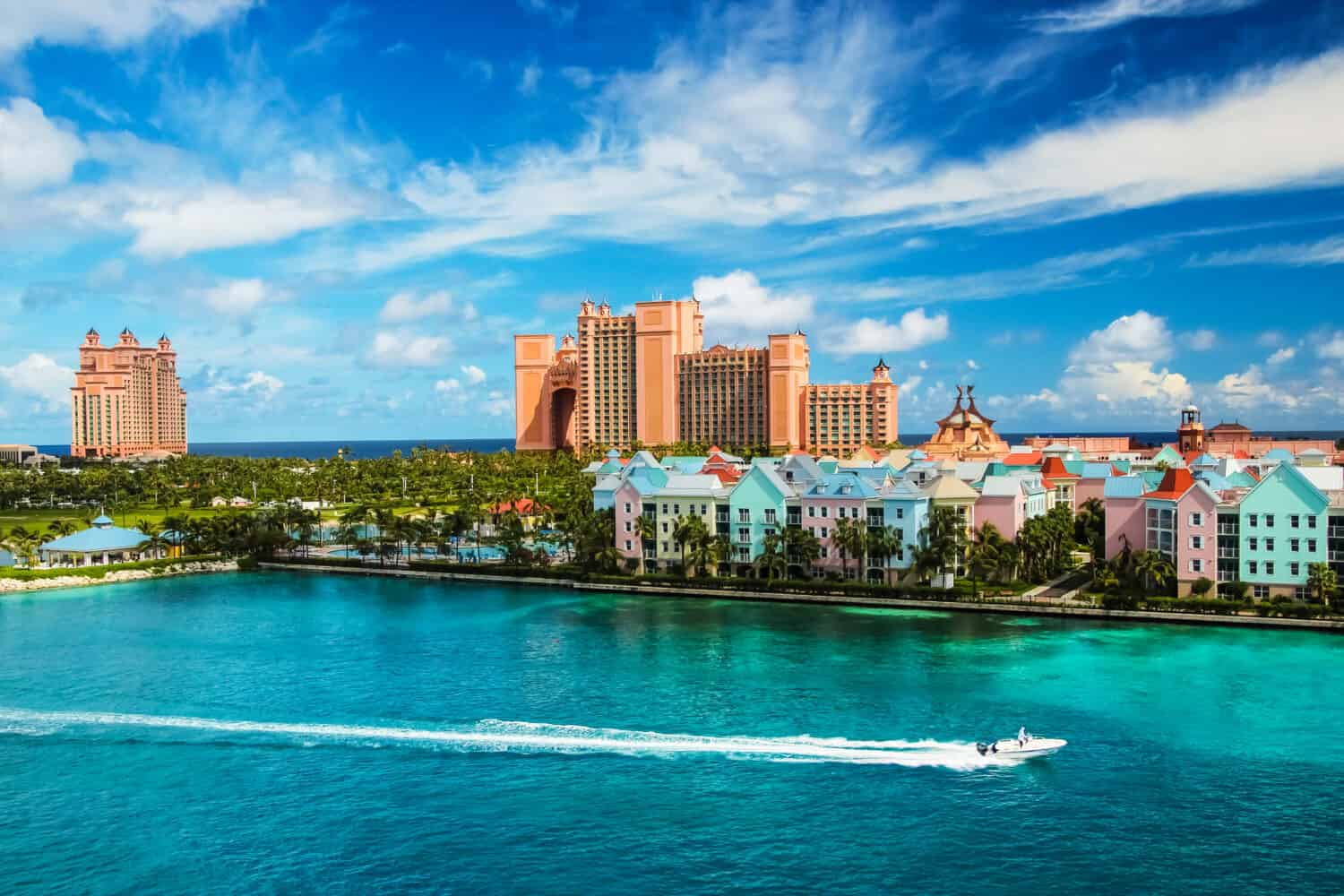
The tourist industry in the Bahamas benefits from its location off the southeastern coast of Florida.
©Stefan Ugljevarevic/Shutterstock.com
Once a haven for pirates, the Bahamas today is a peaceful tourist destination. Its proximity to the United States makes it an affordable destination not only for the elite but for middle-class tourists.
4. Bahrain (1971)
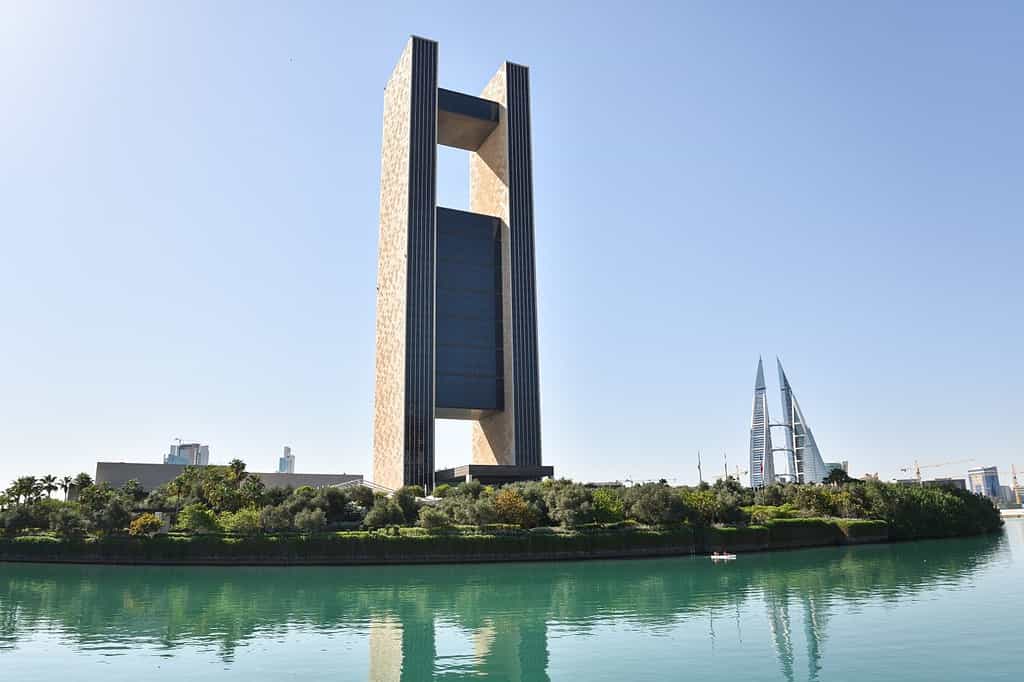
Bahrain’s capital, Manama, is constructing a futuristic skyline.
©Miles Astray/Shutterstock.com
Like its neighbors in the Persian Gulf, Bahrain sits on an ocean of oil that has made the tiny island immensely wealthy. The King Fahd Causeway connects it to Saudi Arabia.
5. Bangladesh (1971)
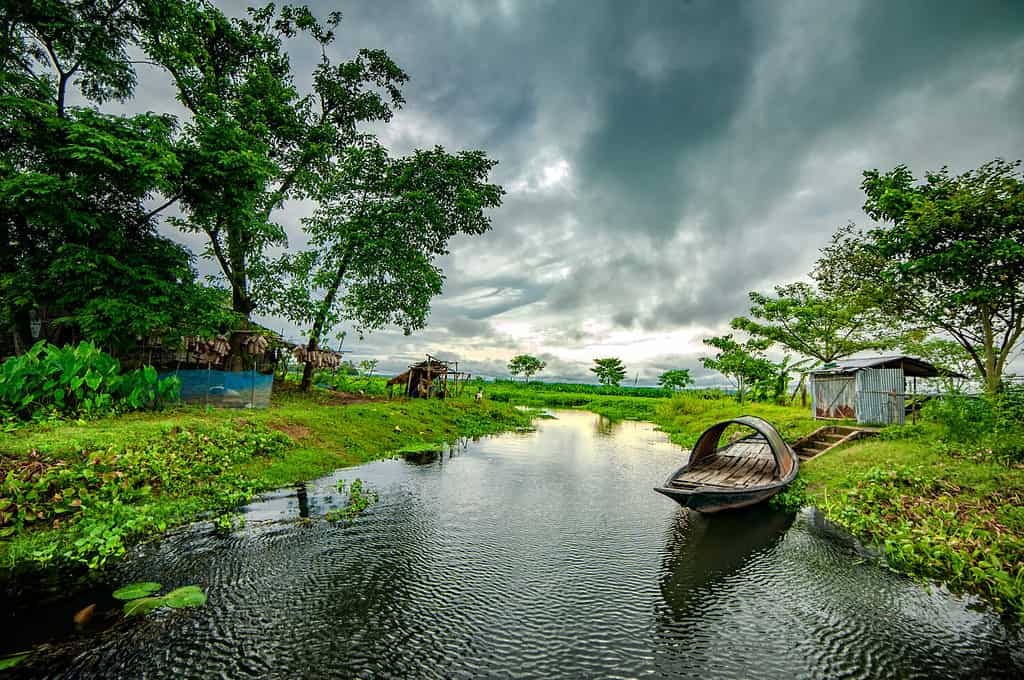
Bangladesh is a well-watered country of lush vegetation.
©Chobi_Wala/Shutterstock.com
Formerly known as Bengal, Bangladesh separated from India as an Islamic country. The lush landscape supports agriculture and one of the greatest population densities on earth.
6. Barbados (1966)
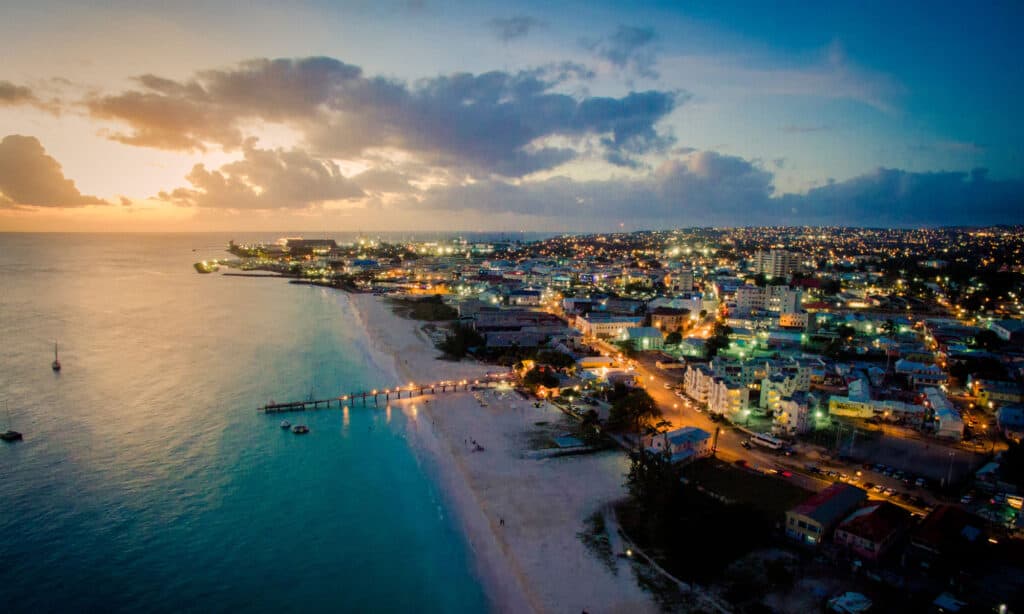
Bridgetown is the capital of Barbados.
©iStock.com/Above Barbados
Barbados was once a shady place for rum-drinking pirates. There are still plenty of rum drinkers in the island’s resorts, restaurants, and nightclubs!
7. Belize (1981)
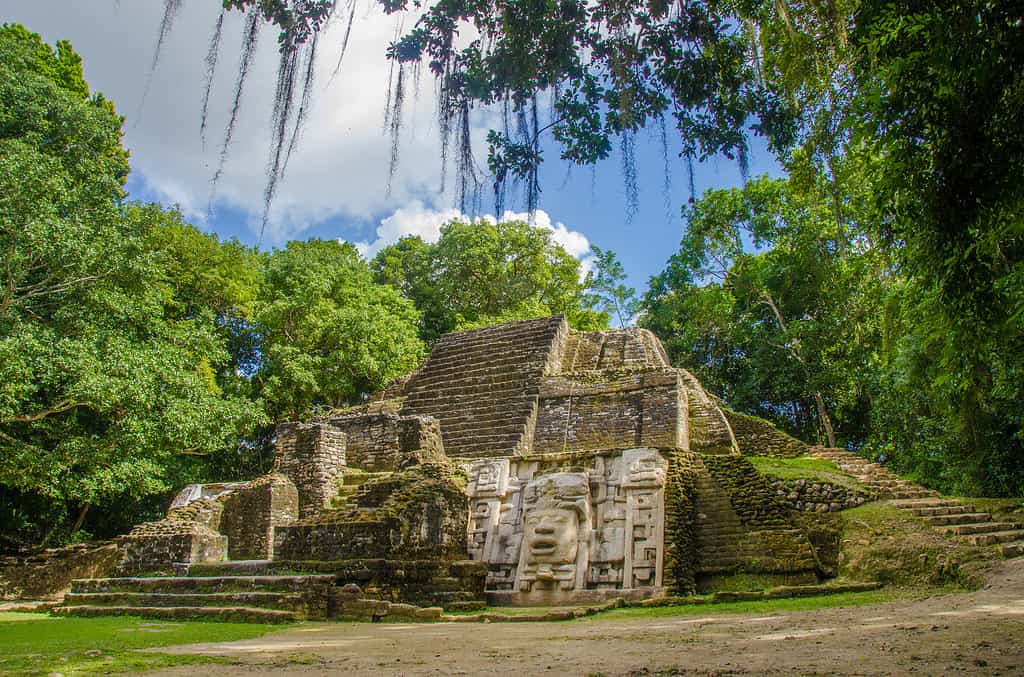
Belize attracts tourists with its Mayan ruins, rainforests, and coral reefs.
©iStock.com/SimonDannhauer
There is much to attract tourists to Belize: historic Mayan ruins, dense rainforests and wildlife, and some of the best coral reef diving in the world.
8. Botswana (1966)

Botswana is one of the world’s largest sources of sustainable diamonds.
©DiamondGalaxy/Shutterstock.com
One of Africa’s most surprising success stories, Botswana has achieved some of the highest per capita economic growth rates of any country in the world, credited to rich mineral resources, stable government, and effective economic policies.
9. Brunei (1984)

One of the most beautiful buildings in Brunei is the Sultan Omar Ali Saifuddin Mosque.
©James Jiao/Shutterstock.com
Brunei is a wealthy, industrialized country that runs on oil wealth. The Sultan of Brunei, Hassanal Bolkiah ibn Omar Ali Saifuddien III, is one of the wealthiest people in the world with over $30 billion.
10. Canada (1982)
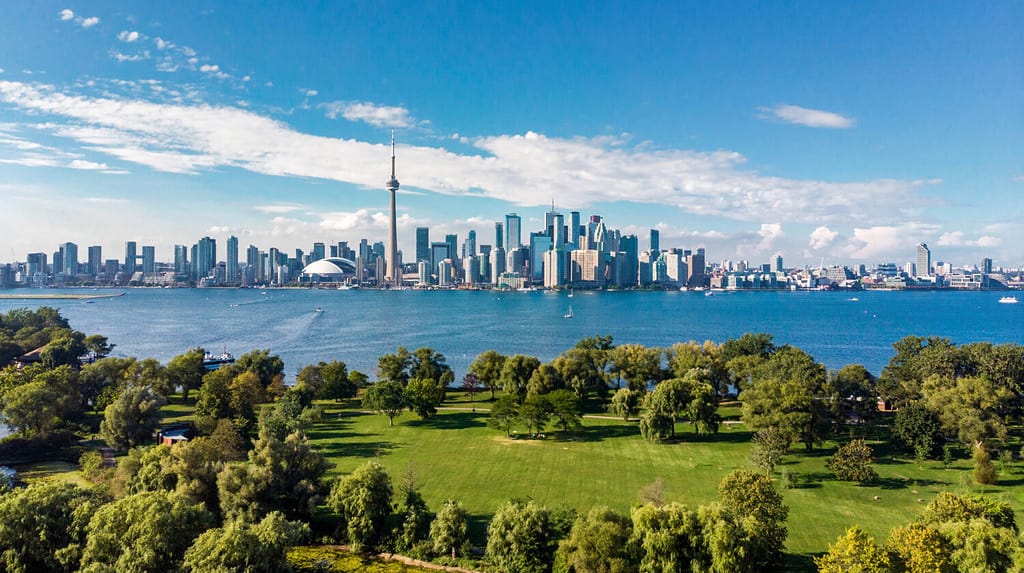
Over 200 ethnic groups live in Toronto.
©R.M. Nunes/Shutterstock.com
Surprisingly, Canada became fully independent only in 1982 with the Canada Act, which approved its constitution and its right to amend it. Canada is a major destination for immigrants, making cities like Toronto among the most ethnically diverse in the world.
11. Cyprus (1960)
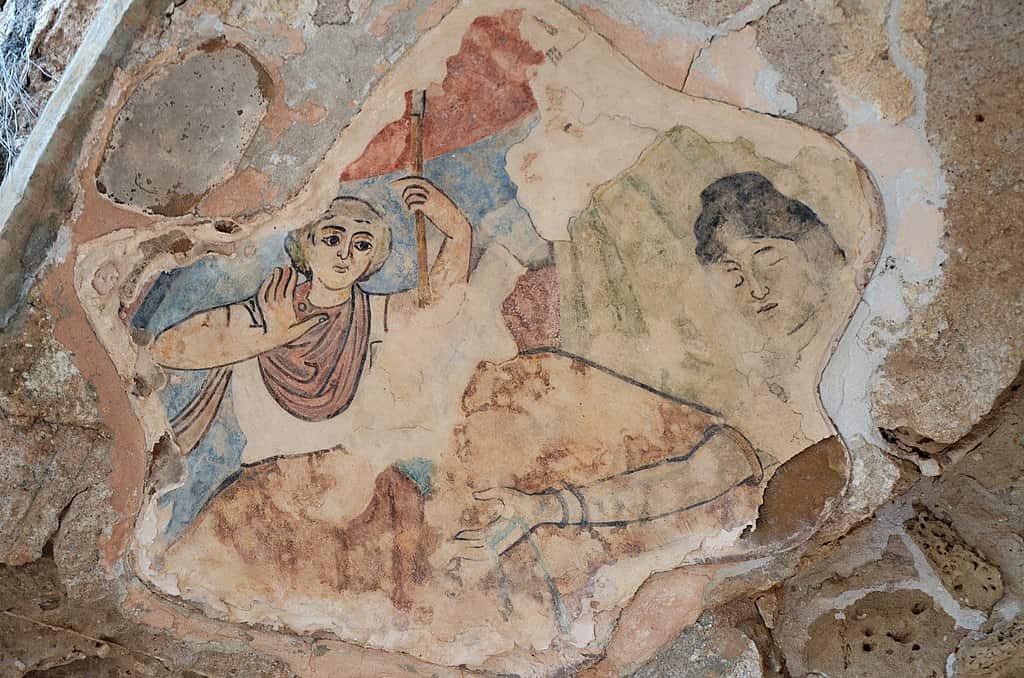
Cyprus has an ancient history, heavily influenced by Greco-Roman culture.
©CC BY-SA 2.0 - License
The island of Cyprus is bitterly divided between ethnic Turks in the north and Greeks in the south. The longest-running UN peacekeeping mission in history has frozen the conflict in place.
12. Dominica (1978)
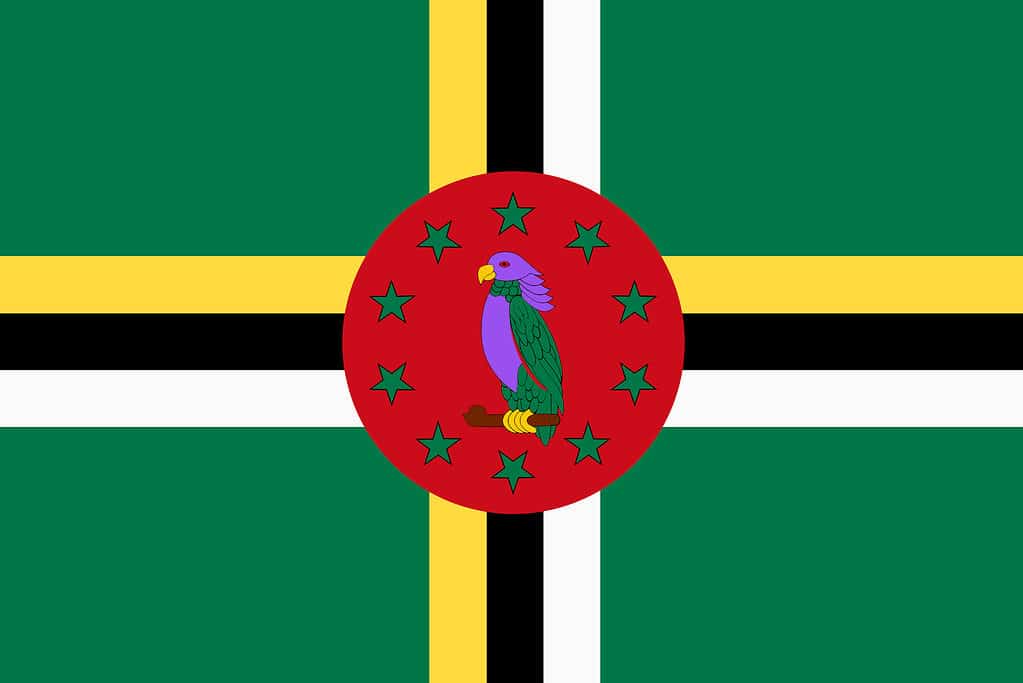
The sisserou parrot is the national bird of Dominica and is depicted on its flag.
©iStock.com/Nigel Stripe
Dominica is a Caribbean island nation. It has some of the most unique and rare wildlife in the world. Only 50 specimens of the purple-feathered sisserou parrot, the national bird, still survive in the wild.
13. Egypt (1922)
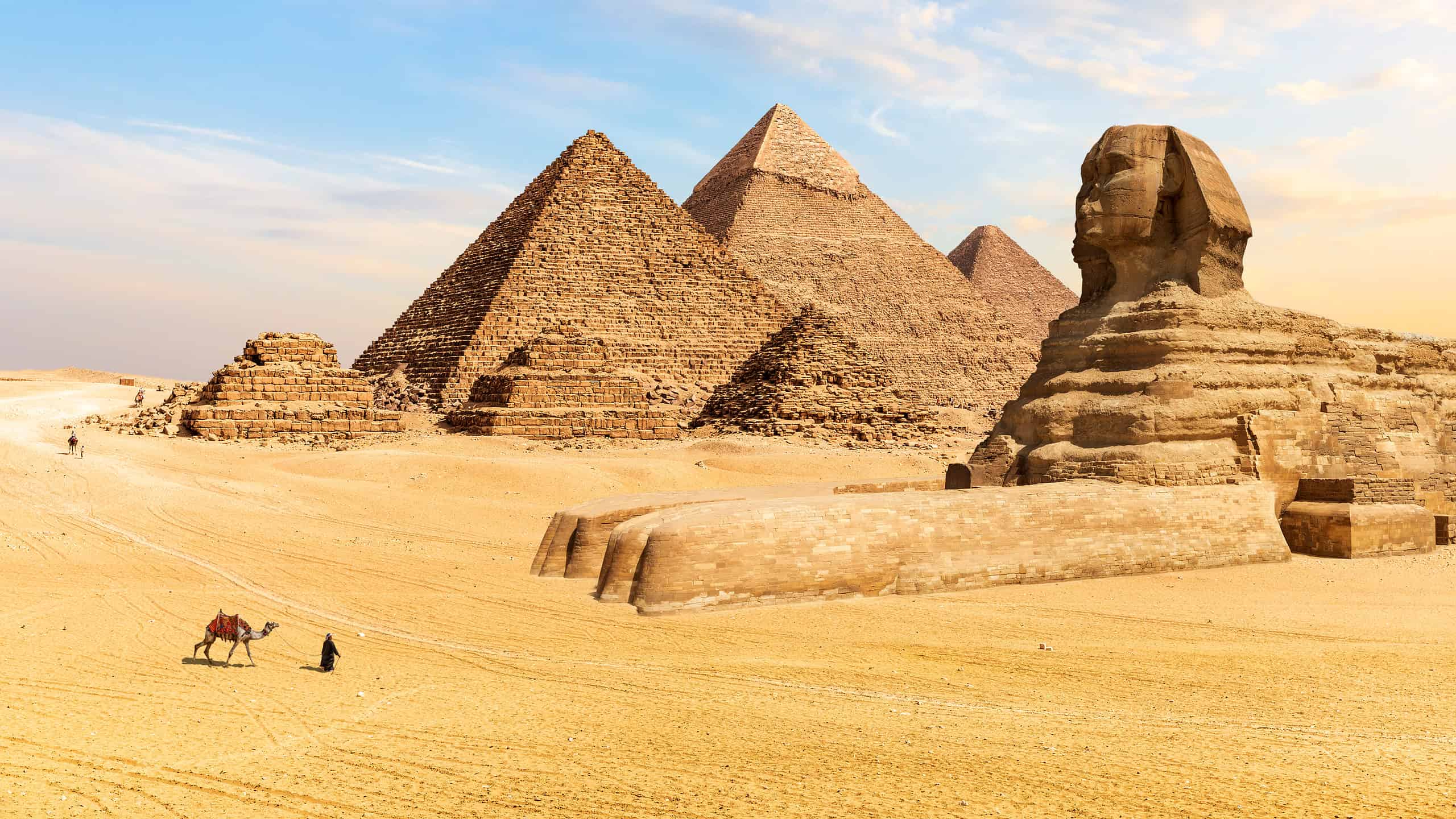
Egypt was a strategic colony for the British Empire.
©AlexAnton/Shutterstock.com
Britain took over Egypt from the Ottoman Empire. It was a lynchpin of their colonial system, as it controlled the strategic chokepoint between the Mediterranean and the Red Sea.
14. Eswatini (1968)

Formerly known as Swaziland, Eswatini is a landlocked country situated between South
Africa
and Mozambique.
©hyotographics/Shutterstock.com
Eswatini is classified as a lower-middle income country but it suffers from poverty and the world’s highest HIV/AIDS prevalence rate.
15. Fiji (1970)

Fiji is made up of a group of volcanic islands in the South Pacific.
©Marco Ramerini/Shutterstock.com
A British colony for almost a century, Fiji has struggled with unity since independence in 1970. A new constitution in 1997 tried to heal ethnic divisions by sharing power more equally.
16. Gambia (1965)

Gambia is a country along both sides of the Gambia River and surrounded by Senegal on its land borders.
©Hyotographics/Shutterstock.com
Officially known as The Gambia, this sliver of a country along the Gambia River is completely surrounded by Senegal. As Senegal was a French colony and Gambia was British, they have some significant cultural differences.
17. Ghana (1957)

Ghana was one of the first British colonies in Africa to win independence after World War II.
©PeopleImages.com - Yuri A/Shutterstock.com
Located on the coast of West Africa, Ghana was a wealthy African kingdom in ancient times, with wealth built on gold deposits. Today it is a stable, rapidly developing nation seen as a regional leader.
18. Grenada (1974)
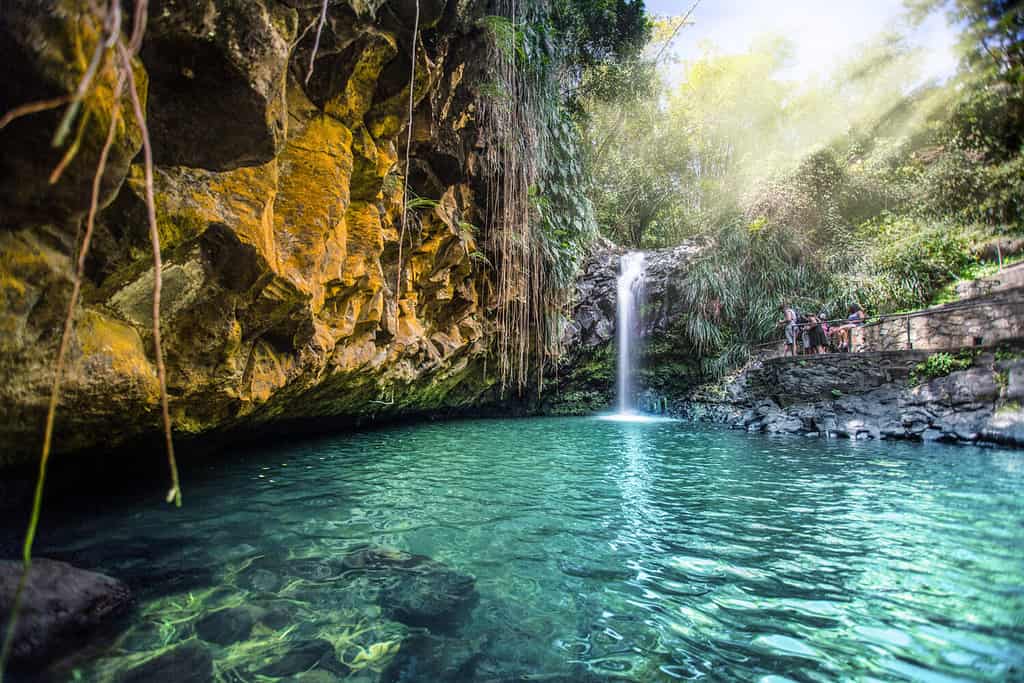
Grenada is a tropical island country in the southern Caribbean.
©Landscapeography/Shutterstock.com
In 1983, Grenada made international headlines when the United States invaded the Caribbean nation to expel a Marxist government. Since then, Grenada has not maintained an army.
19. Guyana (1981)
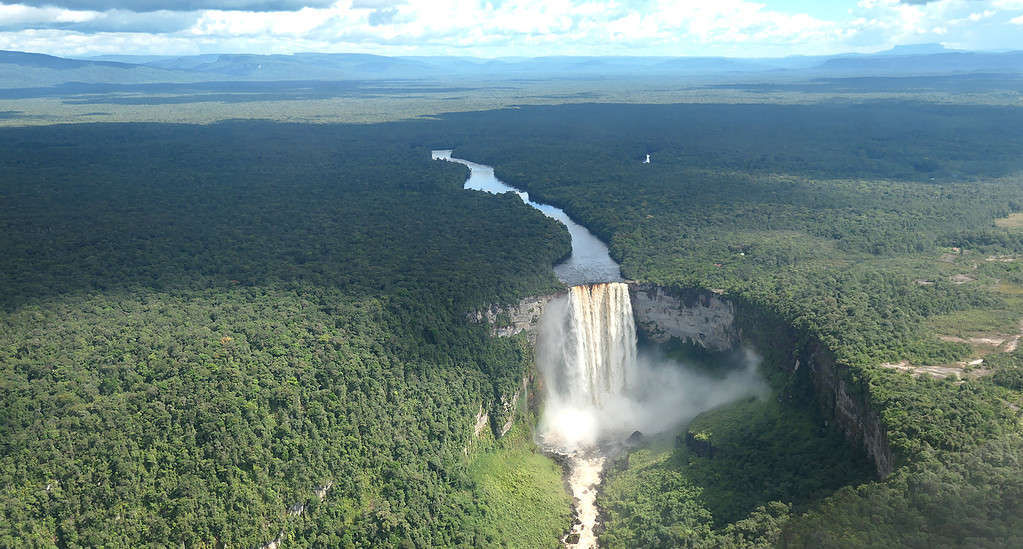
Located in South America, Guyana is a densely forested country.
©deeltijdgod/iStock via Getty Images
Guyana is the only English-speaking country in South America. Hundreds of thousands of Guyanans live in the United States and there is even a movement in Guyana to try to become a U.S. state.
20. Hong Kong (1982)
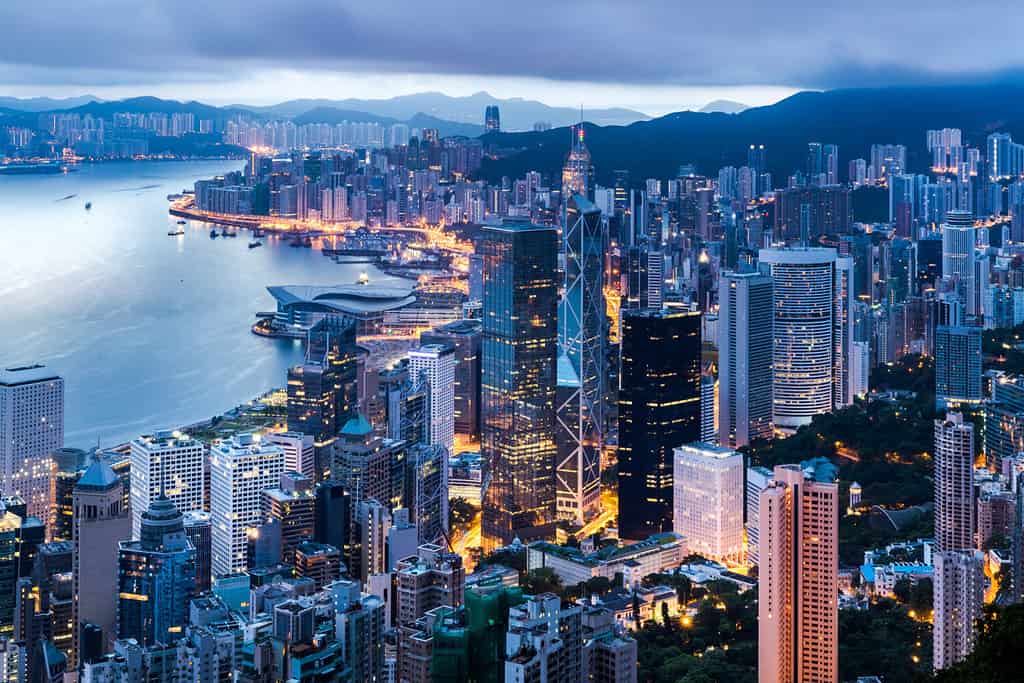
Hong Kong is one of the most densely populated cities in the world.
©EarnestTse/Shutterstock.com
Britain won control of Hong Kong during the Opium Wars with a 99-year lease. It developed into an economic powerhouse with an economy about 1/3 the size of the entire mainland Chinese economy when it reverted to China’s control in 1997.
21. India (1947)
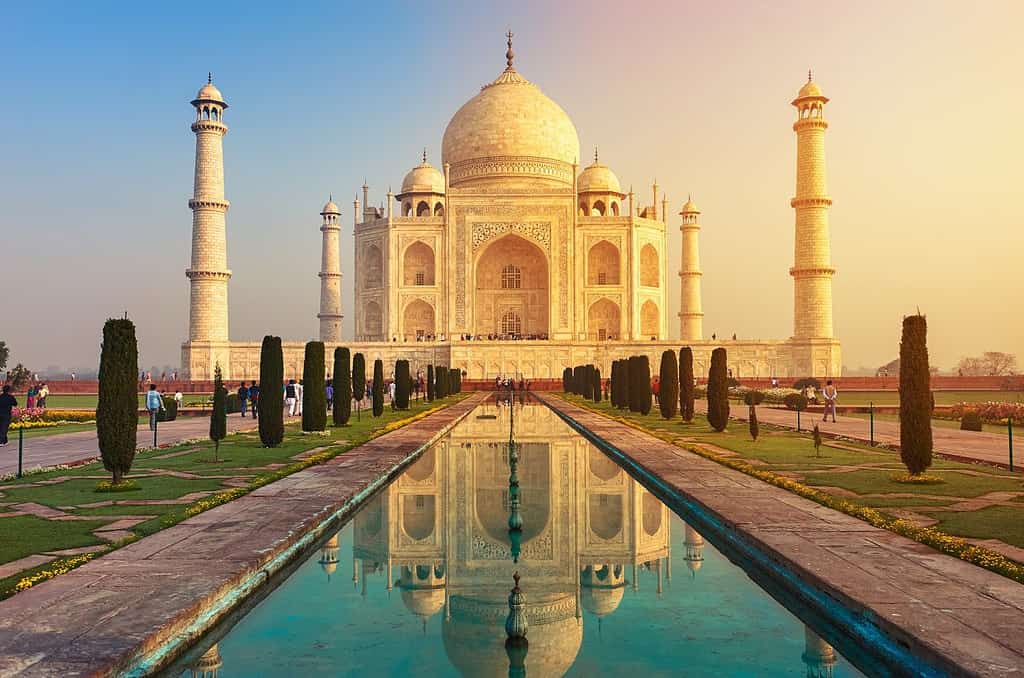
India was always considered the “crown jewel” of the British Empire.
©YURY TARANIK/Shutterstock.com
Britain took advantage of India’s divisions to take control of the entire subcontinent. After World War II, the country was partitioned into the separate countries of India and Pakistan to separate the feuding Hindu and Muslim populations.
22. Iraq (1932)

Iraq’s history goes back to the dawn of civilization.
©Viacheslav Lopatin/Shutterstock.com
Following the collapse of the Ottoman Empire, Britain took control of Iraq, known since ancient times as Mesopotamia. After independence, the turbulence in the Middle East led eventually to two Persian Gulf wars at the end of the 20th century.
23. Ireland (1921)
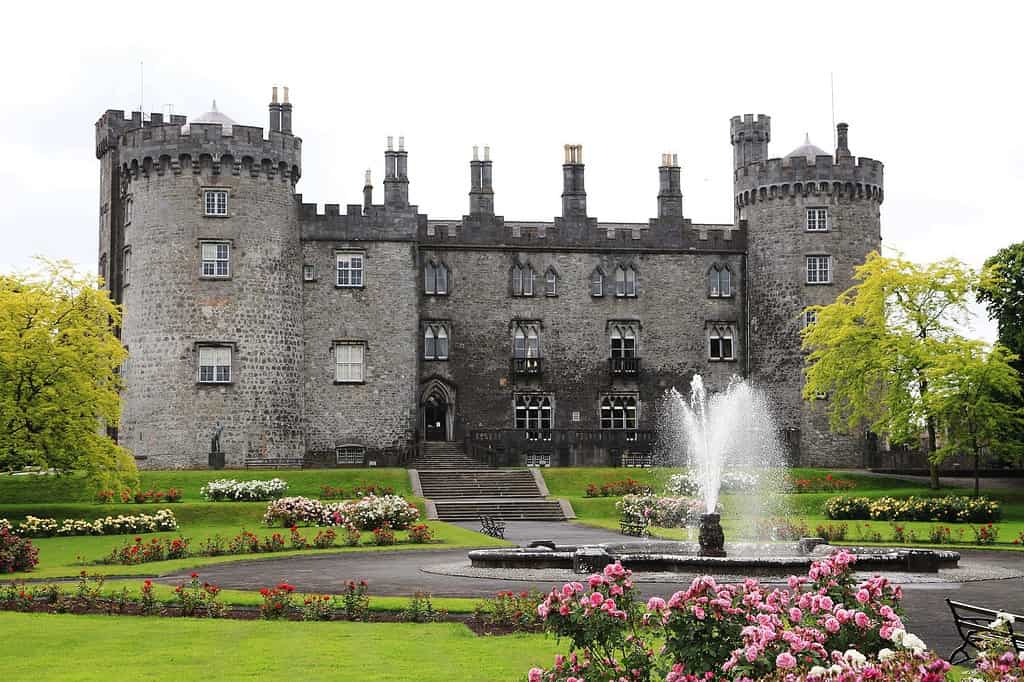
Kilkenny Castle is one of many stately residences in Ireland.
©Brett Andersen/Shutterstock.com
The historic rivalry between Ireland and Britain has made them bitter enemies so much so that the British could not retain control of the entire island. Protestant Northern Ireland remains part of the United Kingdom.
24. Israel (1948)
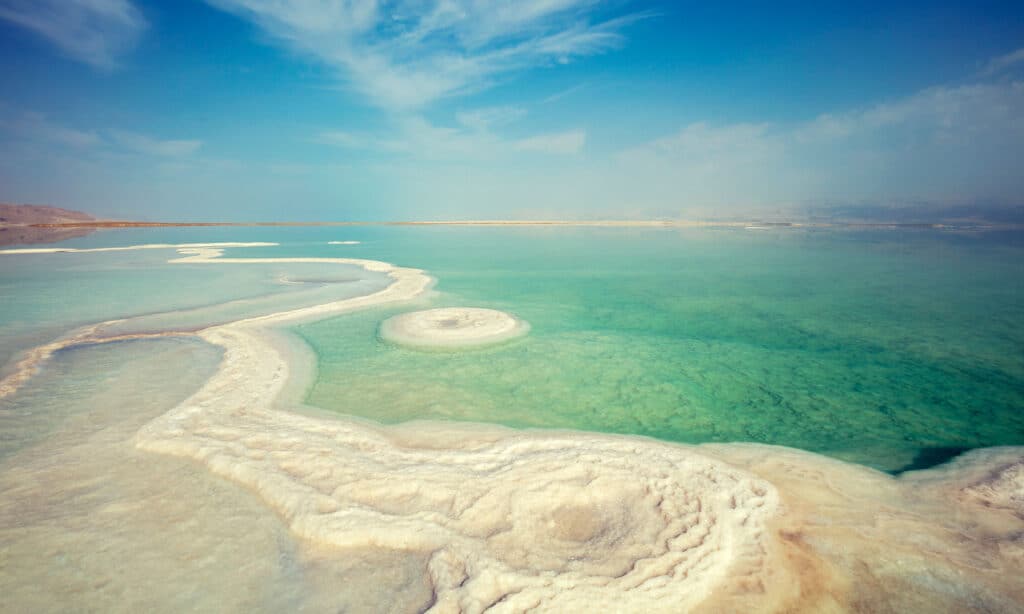
Israel is home to the lowest land elevation on the planet: the Dead Sea.
©iStock.com/vvvita
Palestine was one of the areas Britain took control of from the Ottoman Empire at the end of World War I. After independence, complicated and bitter disputes between the Israeli and Palestinian authorities have made this one of the world’s most dangerous hotspots.
25. Jamaica (1962)
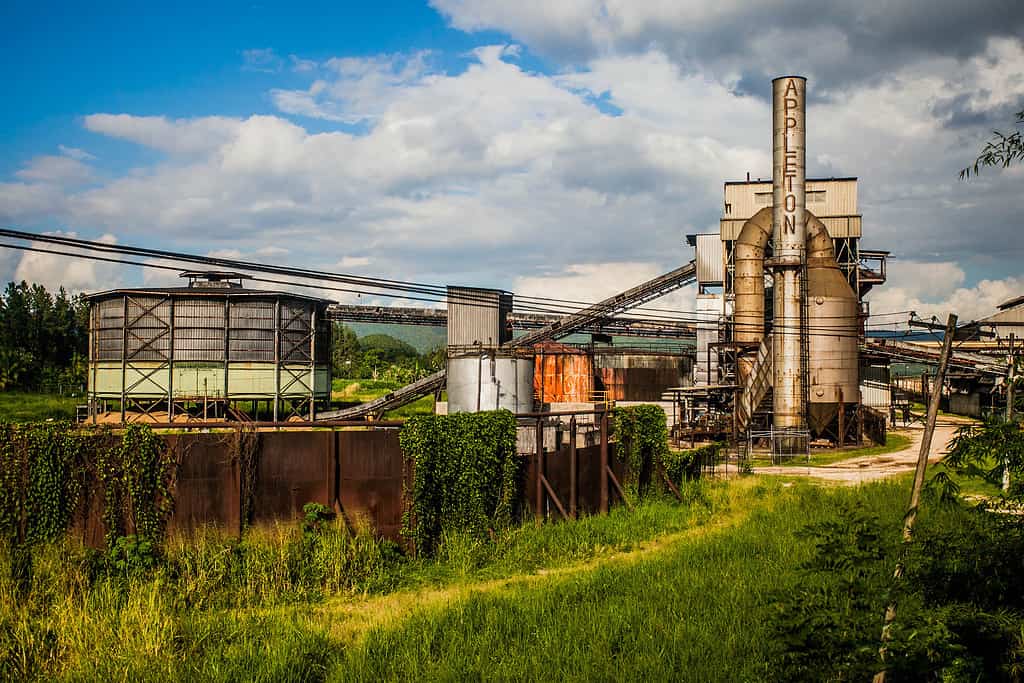
The manufacture of rum at factories like this is a mainstay of the Jamaican economy.
©GummyBone/iStock via Getty Images
The unique and appealing culture and accent of Jamaica is popular around the world. Jamaican immigrants to the UK have had a strong influence on the culture there, such as the development of Multicultural London English as the most popular accent among young urban British people.
26. Jordan (1946)

Jordan is named for the Jordan River, which forms its western border with Israel.
©iStock.com/dnaveh
Britain seized Jordan from the Ottoman Empire after World War I. It is friendly to the West and hosts hundreds of thousands of Palestinian refugees from Israeli-occupied territories.
27. Kenya (1963)
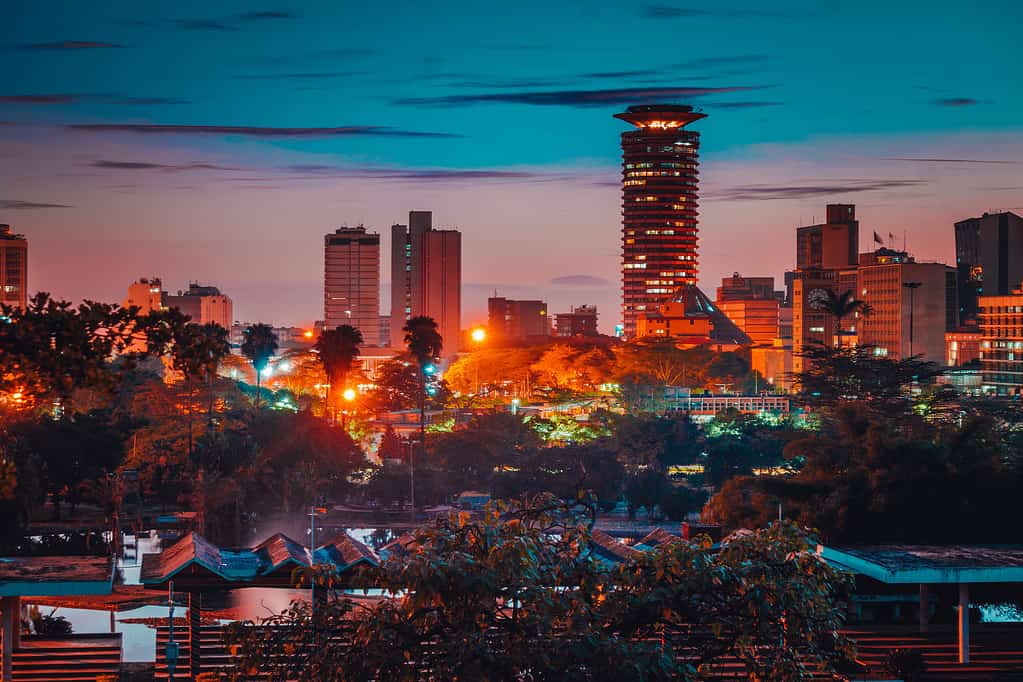
As seen in the Nairobi skyline, Kenya is a rapidly modernizing African country.
©insta_kenya/iStock via Getty Images
Kenya has a wide range of habitats, from the Indian Ocean coast to savannahs, lakes, and highlands. The Great Rift Valley runs through the country and has been the site of the discovery of the earliest human ancestors.
28. Kiribati (1979)
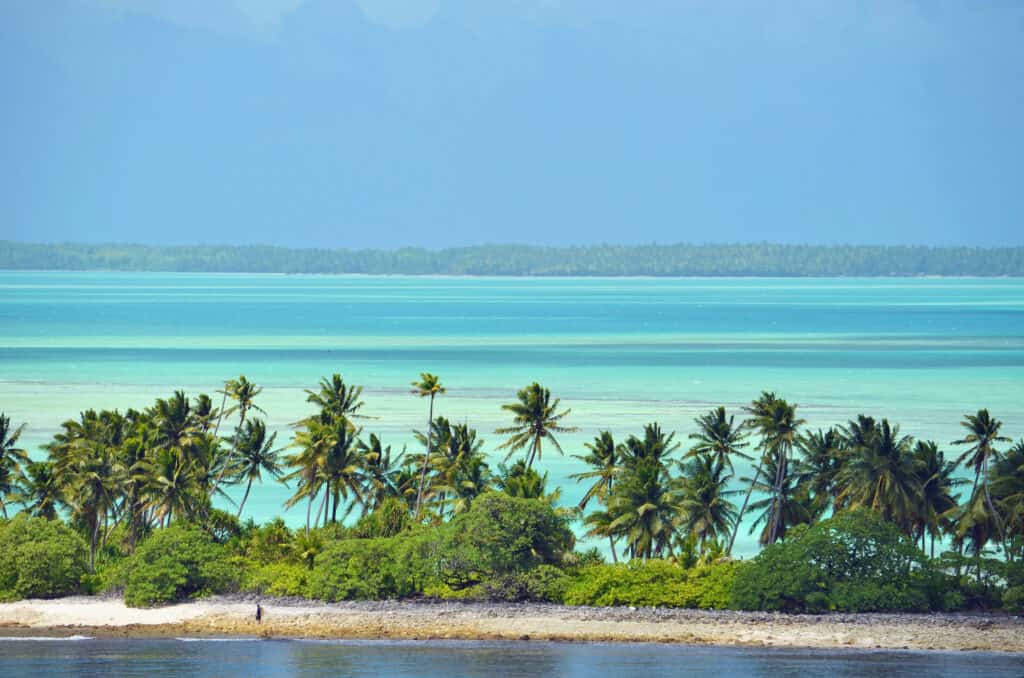
A multitude of small islands make up the far-flung Pacific nation of Kiribati.
©iStock.com/EvaKaufman
Kiribati was the site of intense battles between the Japanese and American armed forces in World War II. Today, 110,356 people call these islands home.
29. Kuwait (1961)
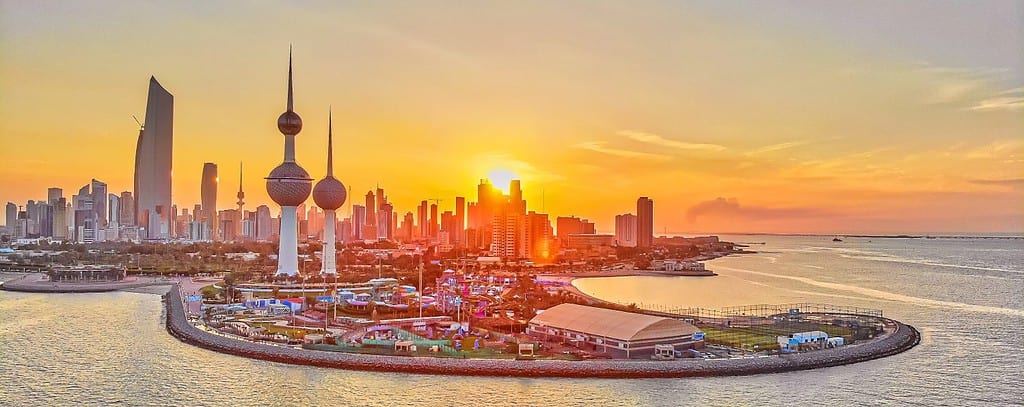
Oil wealth has turned Kuwait into a prosperous, well-developed country.
©Anson Fernandez Dionisio/Shutterstock.com
Retreating Iraqi invaders torched Kuwaiti oil wells in 1991, but the country has now completely recovered and is once again one of the most prosperous petro-states in the Persian Gulf.
30. Lesotho (1966)
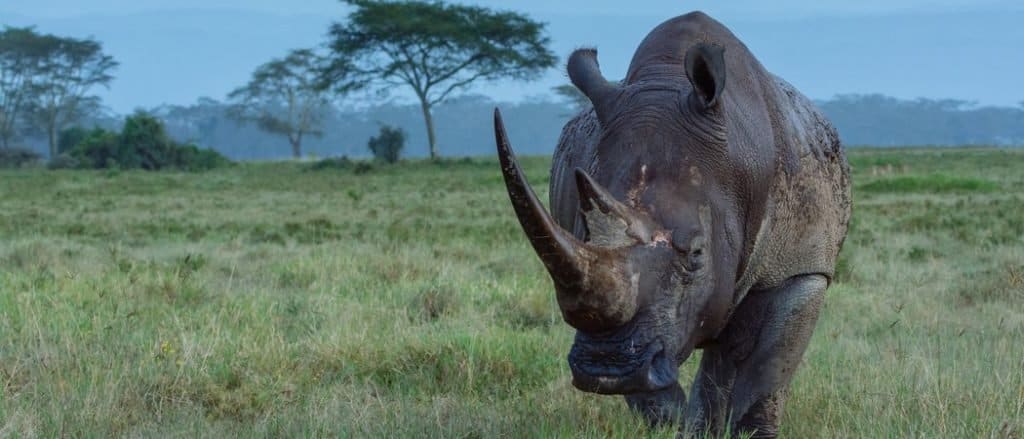
Lesotho’s national animal is the critically endangered black rhino.
©costas anton dumitrescu/Shutterstock.com
Lesotho is a landlocked country in Southern Africa. Its population of about two million people lives in rugged mountain highlands along with many species of endangered African wildlife.
31. Malawi (1964)

Malawi is a place of gorgeous natural beauty.
©Radek Borovka/Shutterstock.com
Although Malawi is a landlocked country, most of it borders the gigantic Lake Malawi, lying in the Great Rift Valley. The lake is full of colorful fish and is a popular destination for boating and diving.
32. Malaysia (1963)

Malaysia is divided into two parts 400 miles apart on the Malay Peninsula and the island of Borneo.
©iStock.com/PeterHermesFurian
Most of Malaysia’s population and development is in West Malaysia. East Malaysia is larger and has many of the country’s natural resources, most notably oil and gas.
33. Maldives (1965)
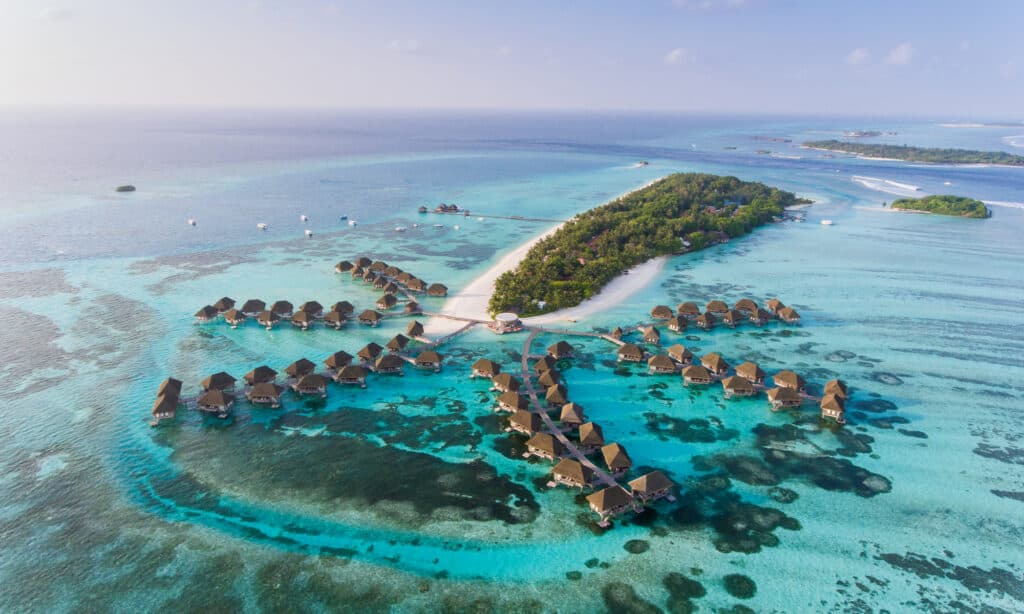
Islands in the Maldives are immensely popular tourist resorts.
©Siraphob Werakijpanich/Shutterstock.com
The Maldives is a country of low-lying islands off the southwestern coast of India. It has the unfortunate problem of being in danger of disappearing due to rising sea levels.
34. Malta (1964)
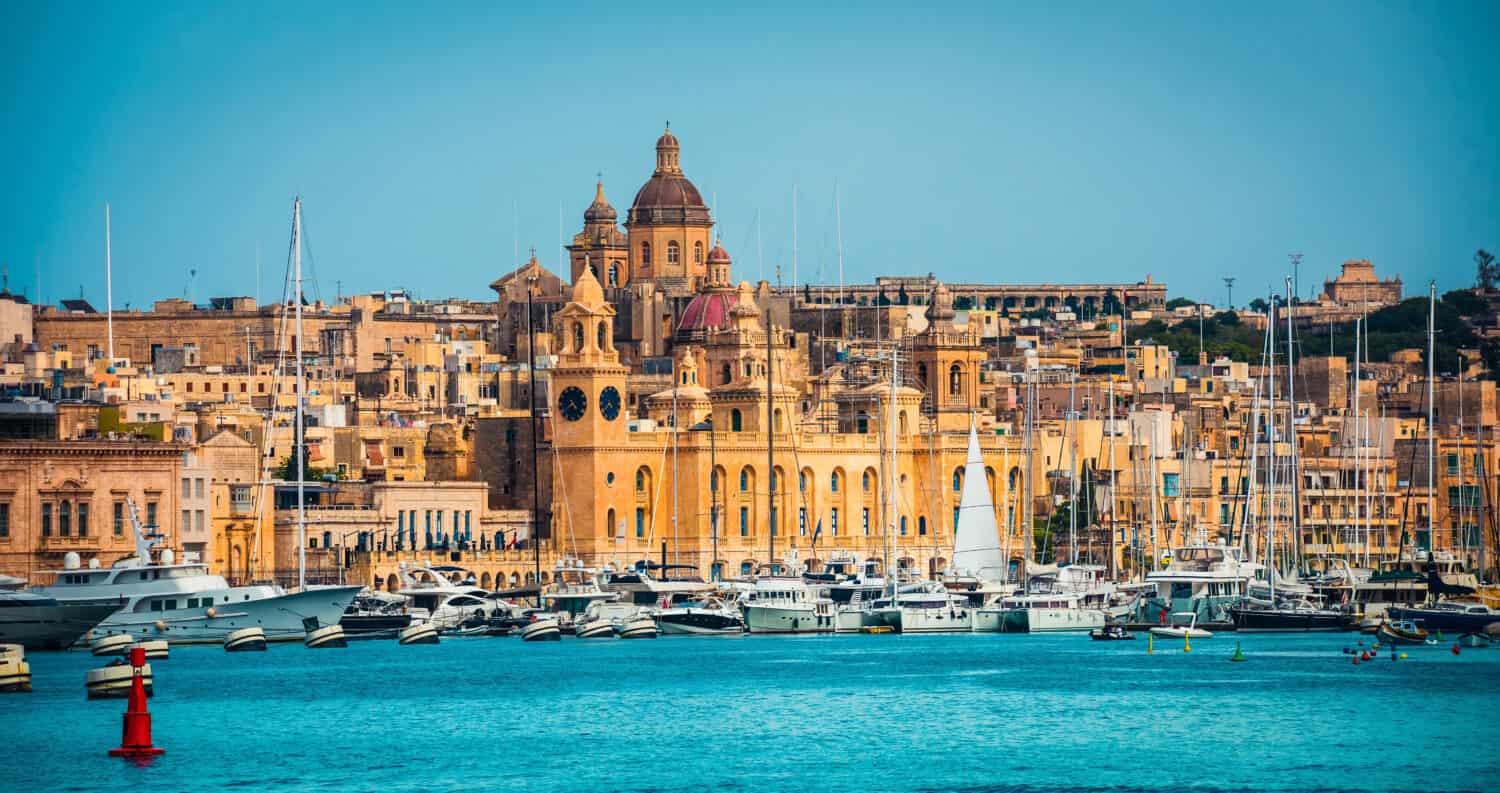
Located in the center of the Mediterranean, Malta played a strategic military role in World War II.
©In Green/Shutterstock.com
The island of Malta was a British naval base during World War II. The Germans and Italians never managed to conquer it even after some of the most intense bombardment of the war.
35. Mauritius (1968)
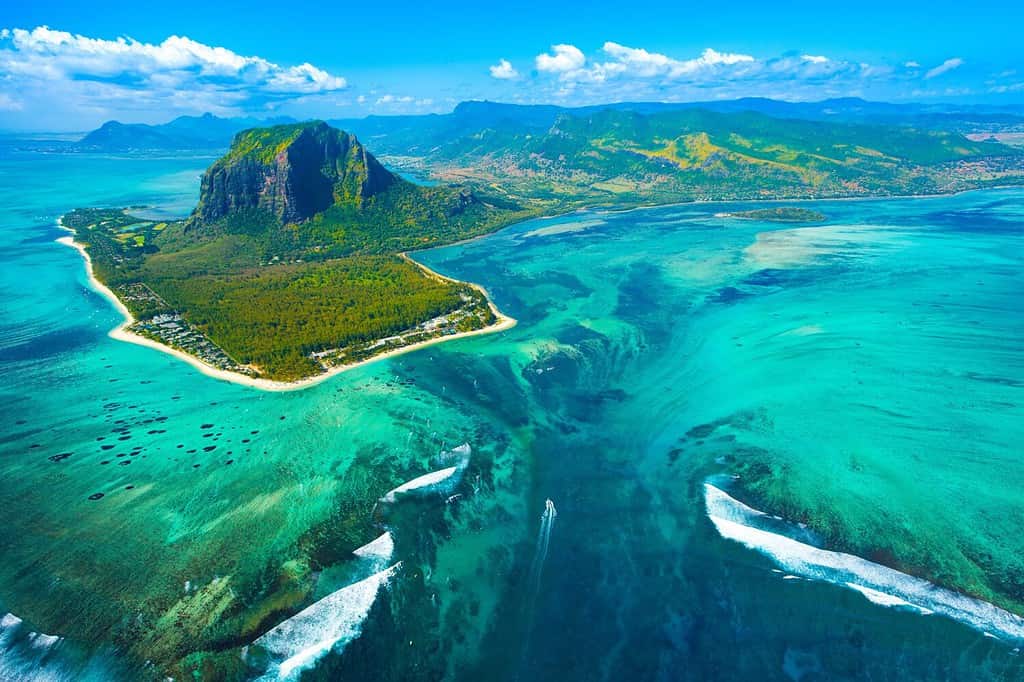
The crystal clear waters of Mauritius reveal dramatic undersea terrain.
©Myroslava Bozhko/Shutterstock.com
Mauritius is one of the most peaceful African countries. Much of it is unspoiled habitat for diverse flora and fauna.
36. Myanmar (1948)

Buddhism is the main religion in Myanmar.
©Boyloso/Shutterstock.com
Known as Burma until a name change in 1989, Myanmar has struggled in recent decades with unstable governments, military coups, and civil war.
37. Nauru (1968)
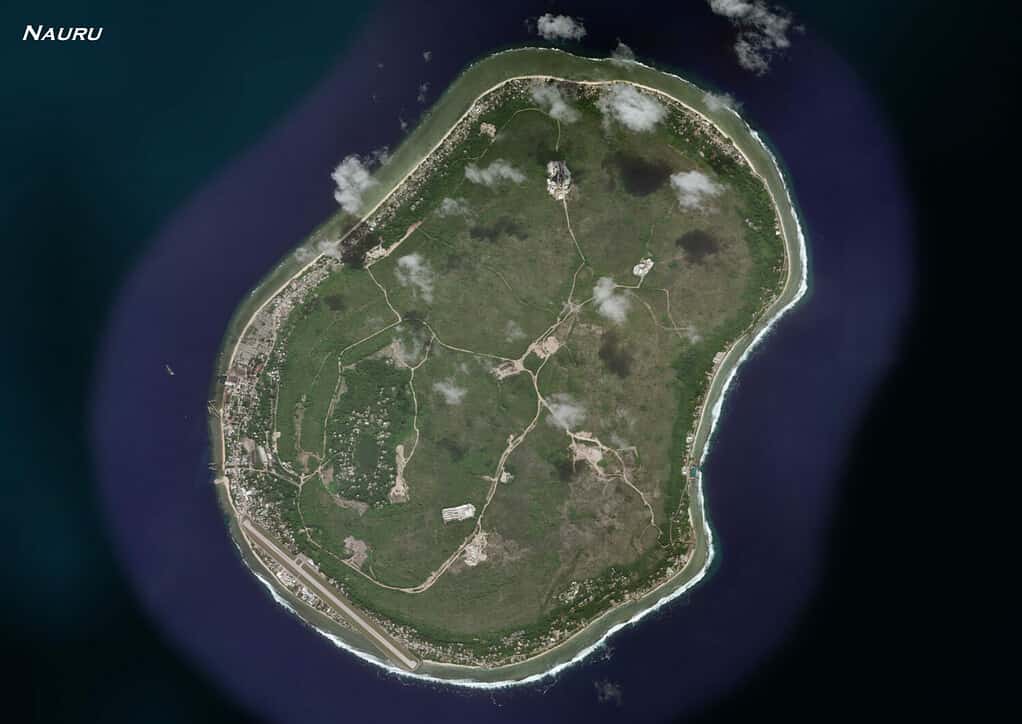
Nauru, consisting of one island is one of the smallest countries in the world.
©yutthana-landscape/Shutterstock.com
Phosphate mining ruined about 80% of the tiny island nation of Nauru. Controversially, Australia has deported undocumented immigrants there to avoid scrutiny in their own country.
38. New Zealand (1947)
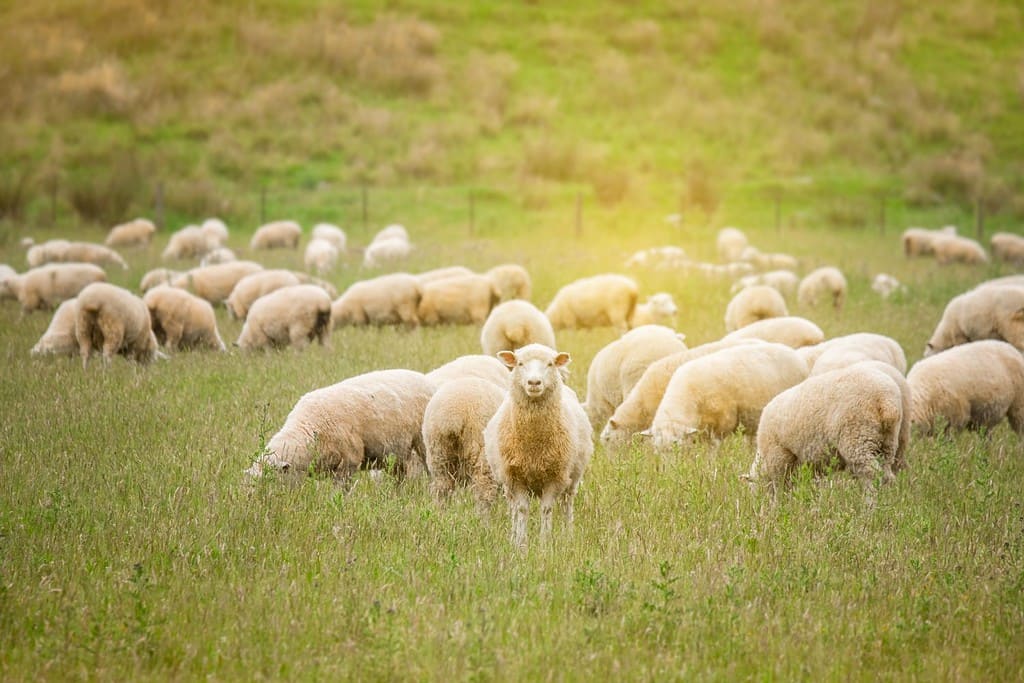
Sheep herding is one of the main income streams of New Zealand.
©Klanarong Chitmung/Shutterstock.com
New Zealand is one of the most remote countries of the world, located so far south that multiple species of penguins live on its southern islands. New Zealand has worked hard to protect the rights of the indigenous Maori people and their cultural influence has been significant in the country.
39. Nigeria (1960)
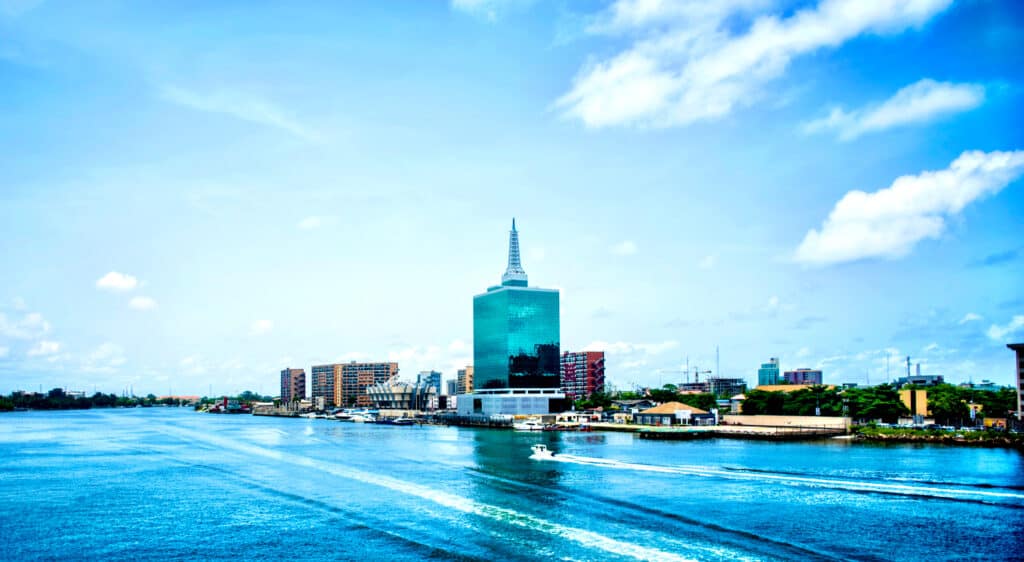
Lagos is the largest city in Nigeria.
©Alucardion/Shutterstock.com
Nigeria is the most heavily populated country in Africa, with over 220 million people of 371 ethnic groups. It is an emerging economic and military power.
40. Oman (1951)

This Omani 5 Rial banknote features a portrait of Haitham bin Tariq Al Said, the country’s Sultan.
©Prachaya Roekdeethaweesab/Shutterstock.com
Historically, Oman’s location on the southeastern coast of the Arabian peninsula has helped it prosper from trade with India. Most of the country’s population lives in cities and villages along the coast.
41. Pakistan (1947)

Historic tombs in Hyderabad, Pakistan.
©Zaman shah/Shutterstock.com
Along with Bangladesh, Pakistan was partitioned from India as a Muslim homeland. Today India and Pakistan are nuclear-armed rivals, with ownership of the disputed Kashmir region one of their major points of difference.
42. Papua New Guinea (1975)
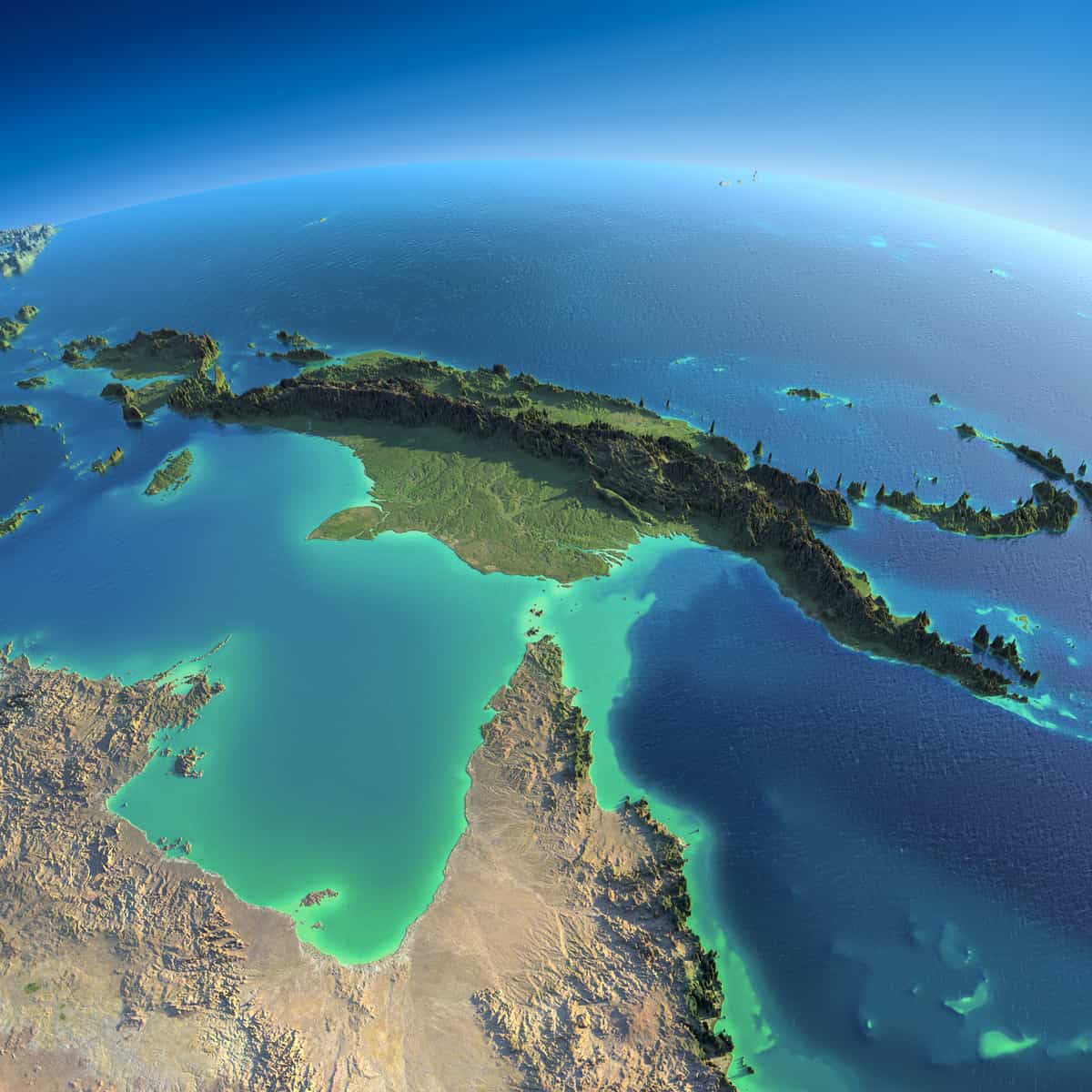
The large island of New Guinea is shared by Indonesia and Papua New Guinea.
©Anton Balazh/Shutterstock.com
Britain turned over its colony of Papua to Australia, and Australia invaded and added the German colony of New Guinea to it during World War I. This was the origin of the independent combined country of Papua New Guinea.
43. Qatar (1971)
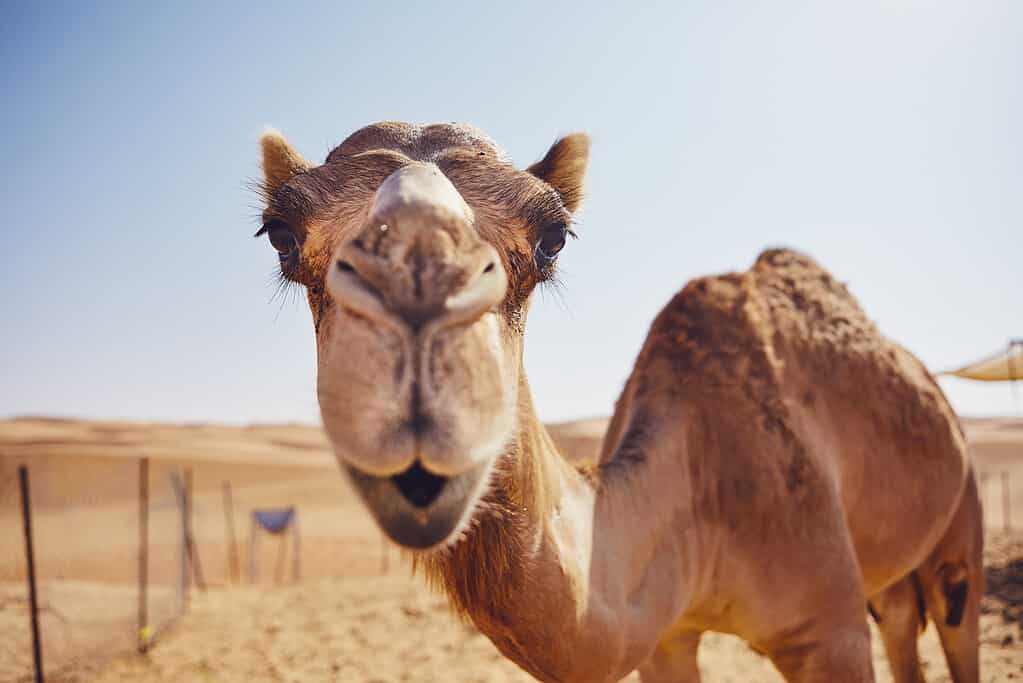
Traditionally a desert waste, Qatar has become a wealthy, highly developed country due to oil wealth.
©Chalabala/iStock via Getty Images
Qatar is one of the oil-rich kingdoms of the Persian Gulf. It hosts the Al Udeid Air Base – the largest American military installation in the Middle East.
44. Saint Kitts and Nevis (1982)
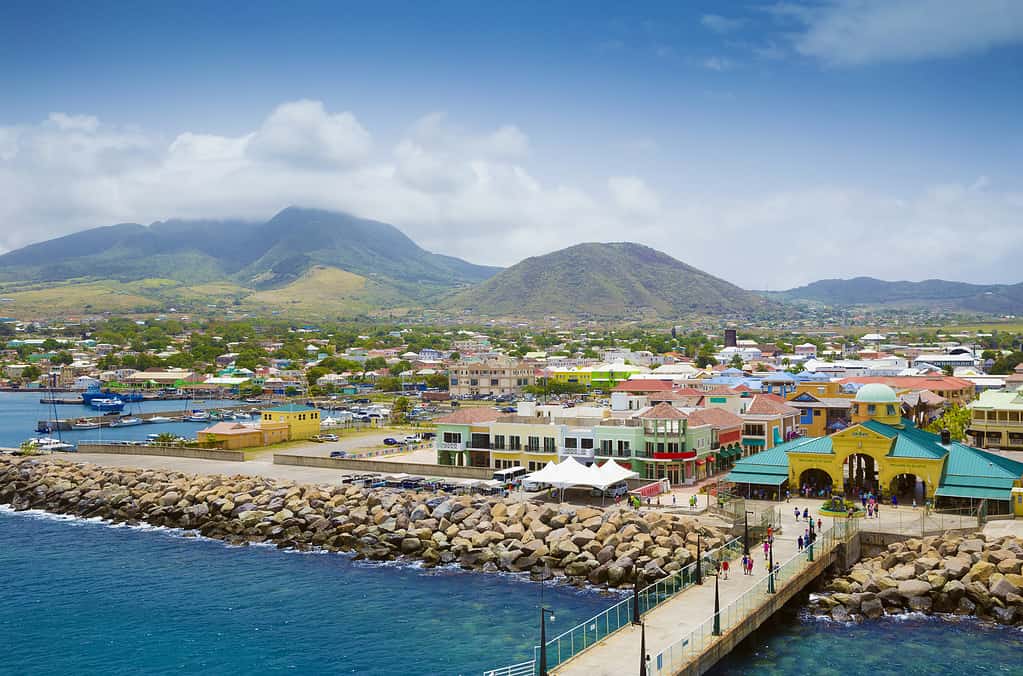
Port Zante in Basseterre town, St. Kitts And Nevis.
©mikolajn/iStock via Getty Images
Saint Kitts and Nevis is a country consisting of two islands with cloud-cloaked mountains and fantastic beaches. Hiking around the dormant Mount Liamuiga volcano is a popular activity for visitors.
45. Saint Lucia (1979)
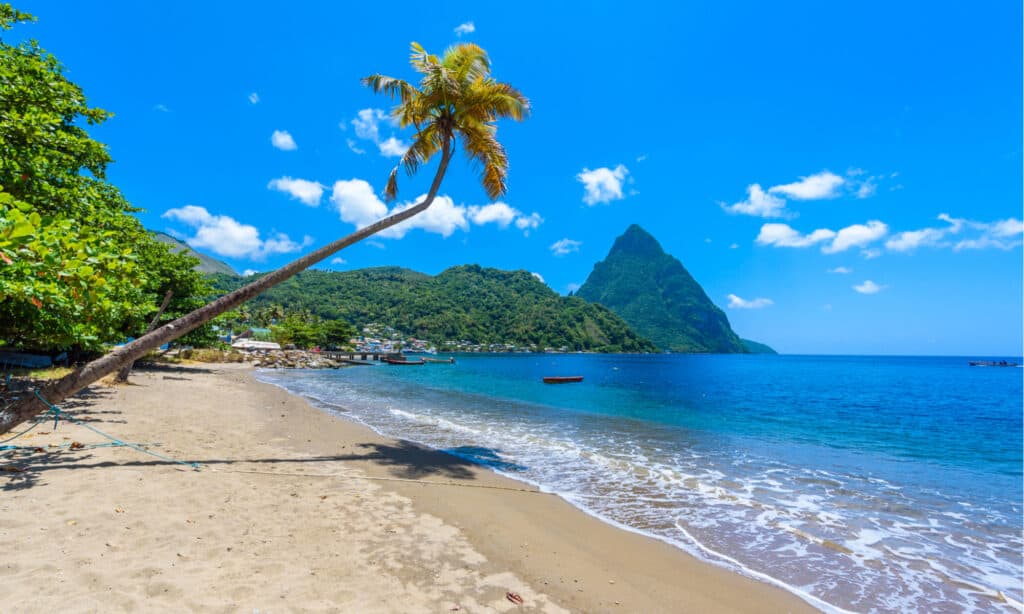
Saint Lucia is famed as one of the most beautiful islands in the world.
©Simon Dannhauer/Shutterstock.com
The most recognizable landmark in Saint Lucia is the Pitons, a couple of almost unnaturally steep mountains. Castries, the capital is a popular Caribbean cruise destination.
46. Saint Vincent and the Grenadines (1979)
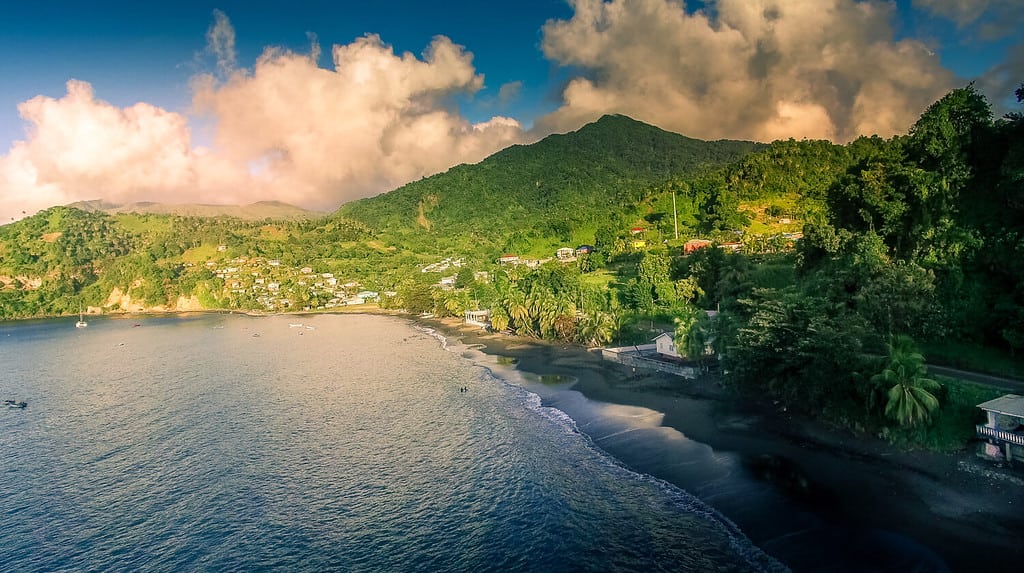
This is Cumberland Bay in St-Vincent and the Grenadines.
©Larwin/Shutterstock.com
Saint Vincent and the Grenadines is an upper middle-income country in the Caribbean. In addition to its public tourism facilities, it has some exclusive private islands.
47. Samoa (1962)
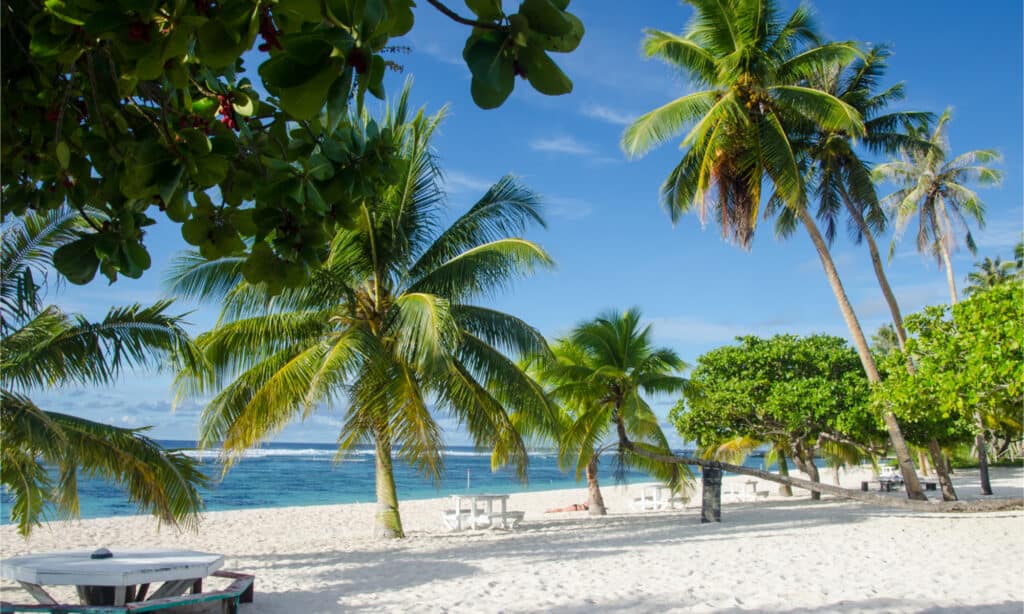
The idyllic Savaii Island in Samoa.
©Wirestock Creators/Shutterstock.com
The islands of Samoa were divided between the United States and Great Britain in the late 19th century. American Samoa is still an American territory, while the British colony became an independent country known as Samoa.
48. Seychelles (1976)

A Seychelles giant
tortoise
on the beach.
©Jenny Sturm/Shutterstock.com
The Seychelles is an Indian Ocean island country that is the smallest in Africa in size and population, with only about 100,200 residents.
49. Sierra Leone (1961)

Freetown is the capital, largest city, and main port of Sierra Leone.
©LEONARDO VITI/Shutterstock.com
Sierra Leone in West Africa was a destination for freed slaves in the British Empire as neighboring Liberia was for American slaves. The last influx of immigrants from Jamaica arrived in 1800.
50. Singapore (1959)
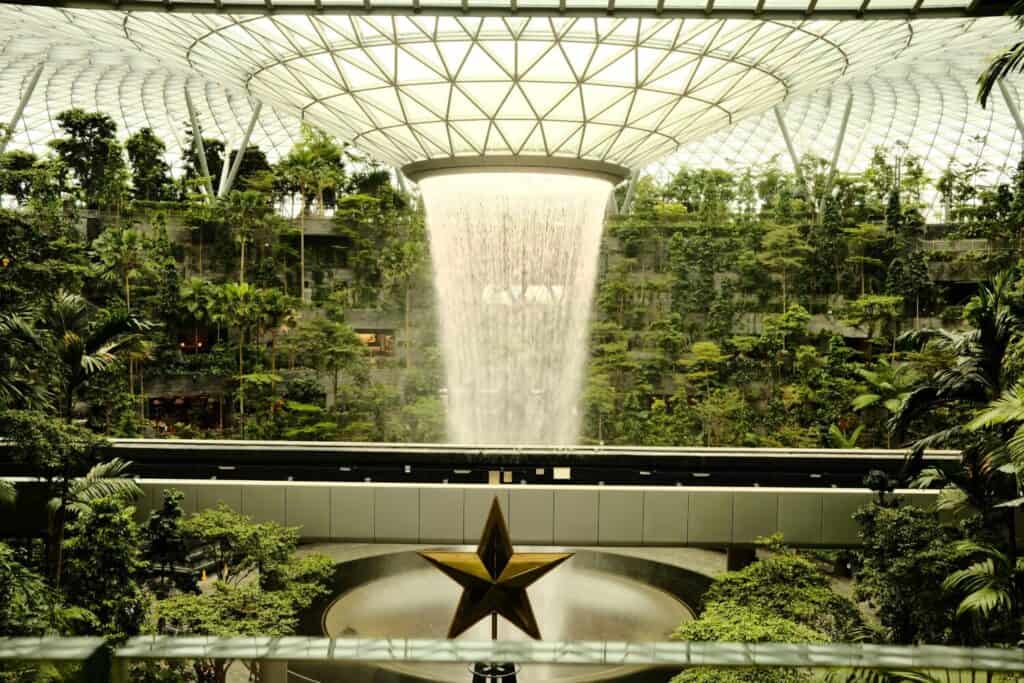
Wealthy Singapore boasts innovative architecture, like this shopping mall with its own rainforest and waterfall.
©Nino Del Mundo/Shutterstock.com
Located on one of the busiest shipping lanes in the world, the city-state of Singapore has prospered into a densely populated, highly-developed first-world country.
51. Solomon Islands (1978)
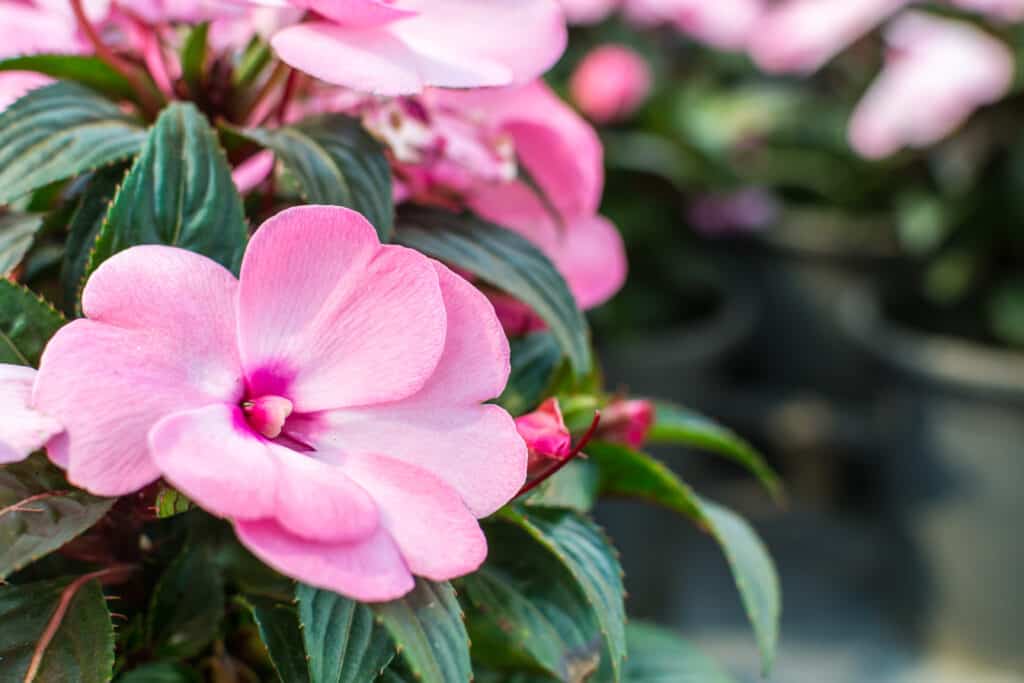
Impatiens is a popular and easy-to grow flower that comes in many colors and blooms profusely. It is indigenous to the Solomon Islands and Papua New Guinea.
©iStock.com/loveischiangrai
The Solomon Islands off the southeastern tip of Papua New Guinea were the site of fierce naval battles between the Japanese and Allied forces. Today they have returned to the calm they have known for most of their history in an isolated part of the world.
52. Somalia (1960)

The Ogaden desert is a disputed region split between Ethiopia and western Somalia.
©Warisara Pearprai/iStock via Getty Images
Somalia on the horn of Africa was colonized both by Italy in the north, and Britain in the south. Britain took control of the Italian portion after World War II. Somalia today has a weak central government and is mostly controlled by regional warlords.
53. South Africa (1910)
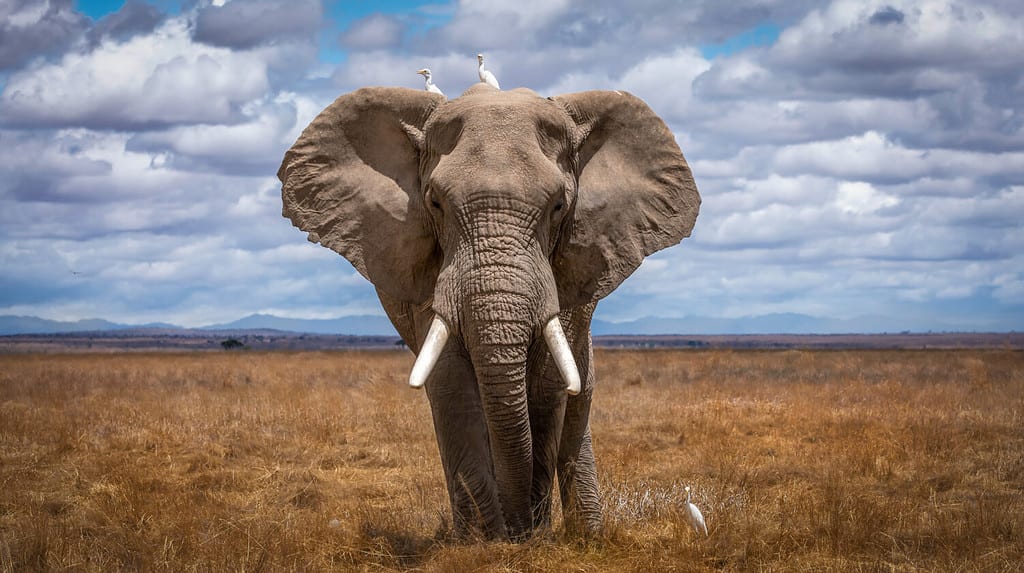
The African
elephant
is the most beloved animal adventure tourists seek out in South Africa’s parks.
©Cautron Live/Shutterstock.com
South Africa has an interesting culture due to the mixture of African, Dutch, and English influences. It was an international pariah for many years as the white minority enforced racist policies against the black majority. The system of apartheid finally ended in 1990.
54. Sri Lanka (1948)
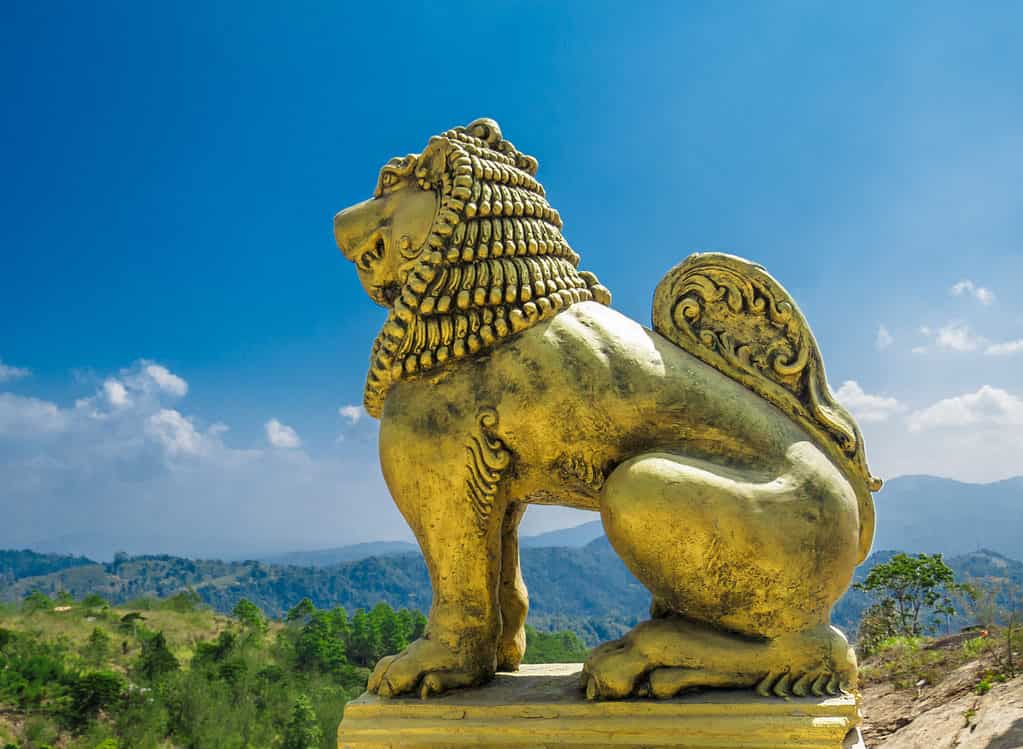
In Buddhism, the
lion
is revered as a protector of the Buddha.
©ThePhotographerSL/Shutterstock.com
Sri Lanka, formerly Ceylon, is a large island off the southeastern coast of India. According to legend, a bridge once connected it to India in ancient times.
55. Sudan (1956)
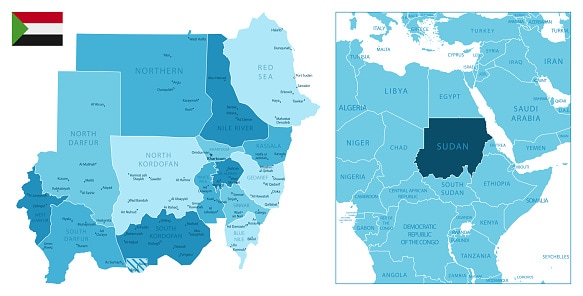
In 2011, South Sudan broke away from the country, leaving a truncated Sudan behind.
©gt29/ via Getty Images
Sudan is an Islamic country south of Egypt. Many years of civil war between the Arab-Islamic north and the Black-Christian south led to an independent South Sudan in 2011. Today, Sudan is a fragile country beset with civil war, natural disasters, and a massive refugee crisis.
56. Tanzania (1961)
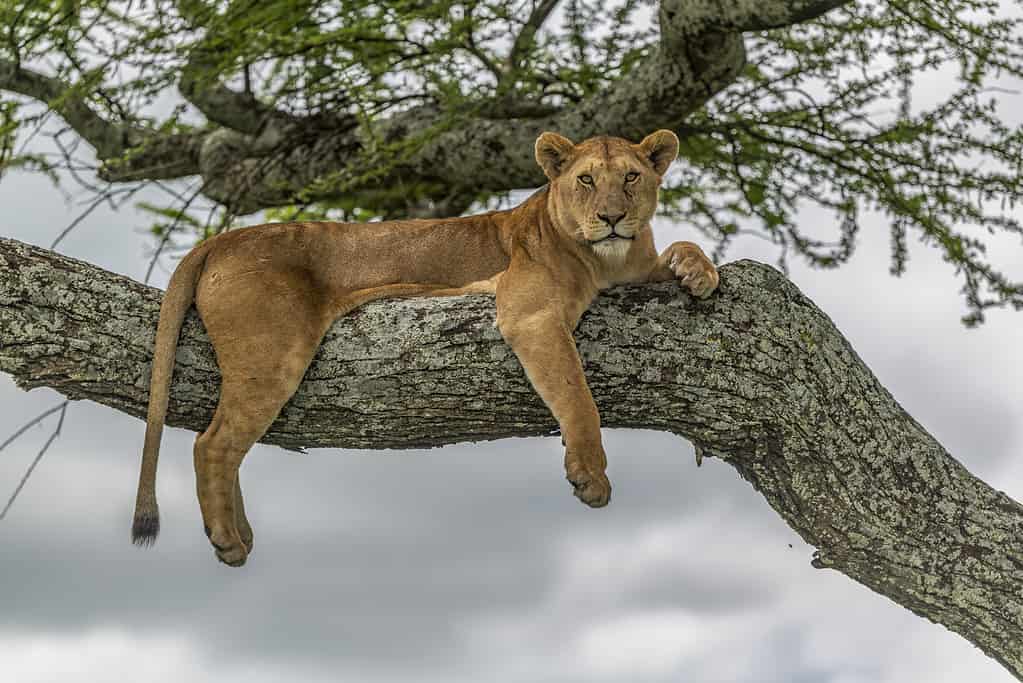
Lions attract photographers and tourists to Serengeti National Park, Tanzania.
©iStock.com/Jennifer Watson
Britain acquired the colony of Tanganyika from Germany as part of the spoils of World War I. Combined with the island of Zanzibar, it was rechristened “Tanzania” at independence. One of its geographic claims to fame is the towering Mount Kilimanjaro.
57. Tonga (1970)

In January 2022 some of the islands of Tonga were coated in volcanic ash from an undersea eruption.
©NZ Defence Force / CC BY 4.0 - License
Tonga is a country in Polynesia consisting of 171 islands, only 45 of which are inhabited. It is considered the country that is third most at risk of cyclones, flooding, and rising sea levels.
58. Trinidad and Tobago (1962)
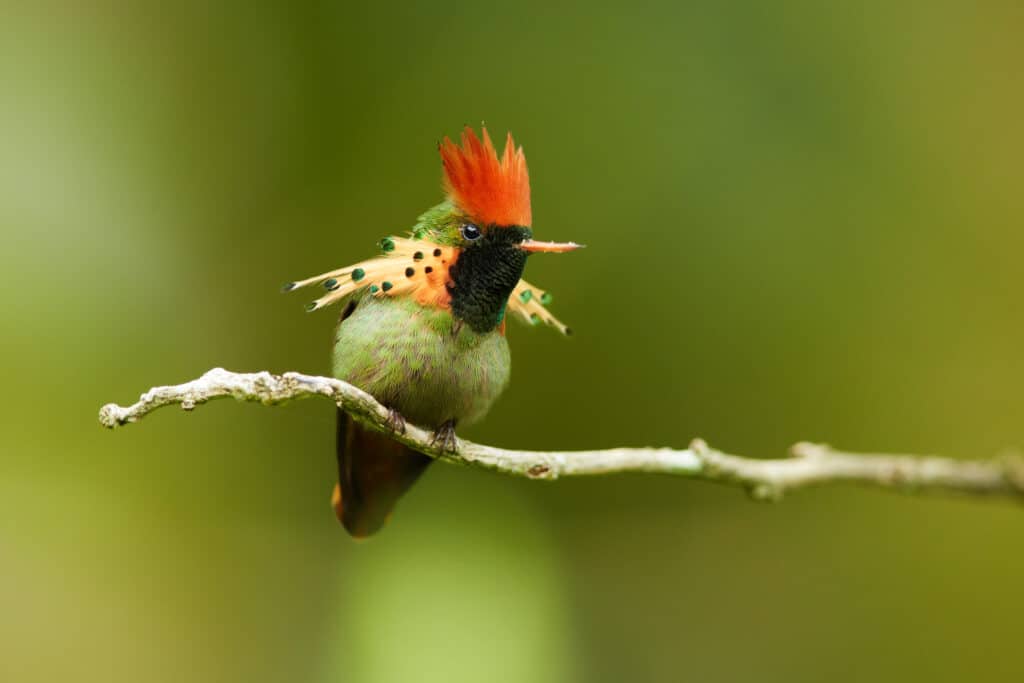
The tufted coquette,
Lophornis ornatusis one of the beautiful indigenous species of Trinidad and Tobago.
©Martin Mecnarowski/Shutterstock.com
As the name implies, Trinidad and Tobago is a country made up of two islands. Trinidad is the larger of the two and most of the population lives there. The islands are especially noted as a sanctuary for exotic bird species.
59. Turks and Caicos (1982)
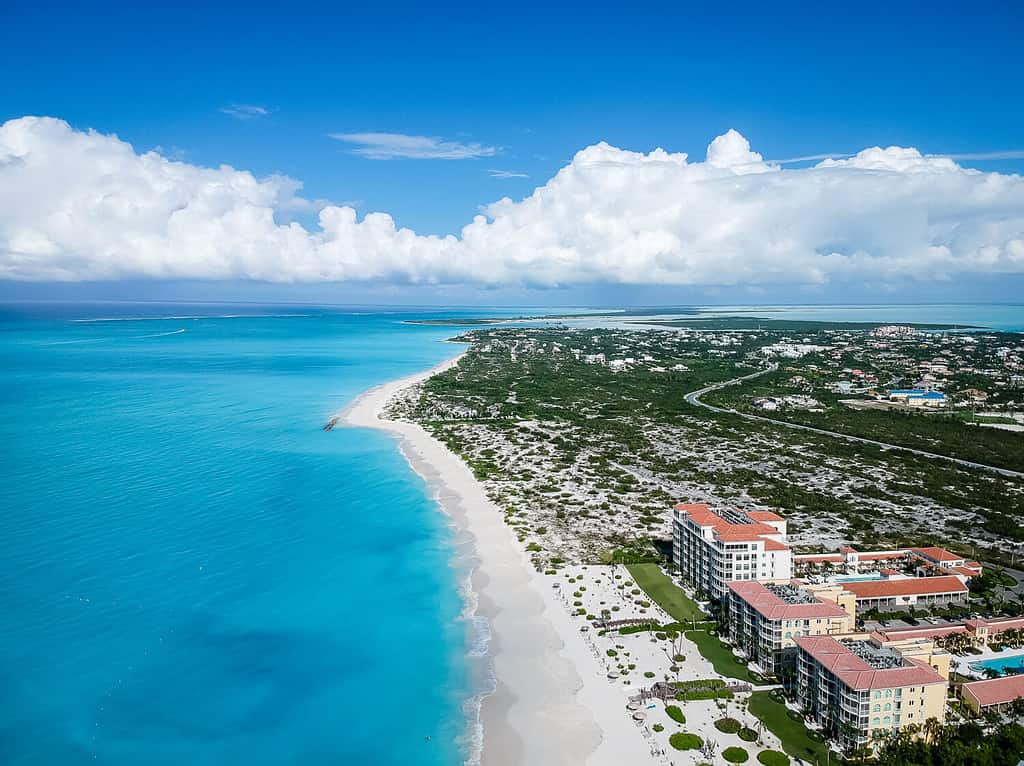
Grace Bay, Providenciales, Turks and Caicos.
©jpbarcelos/Shutterstock.com
Turks and Caicos is an archipelago with a tropical savannah environment. It is considered a biodiversity hotspot. It is a significant breeding ground for seabirds as well as marine life, lizards, snakes, plants, and insects.
60. Tuvalu (1978)

Tuvalu attracts tourists with its spectacular unspoiled beaches.
©mbrand85/iStock via Getty Images
In Tuvalu, the Funafuti Conservation Area is a popular diving and snorkeling spot where swimmers can have close encounters with sea turtles and a kaleidoscope of colorful tropical fish.
61. Uganda (1962)

Mountain gorillas are one of the rarest species in the forests of Uganda.
©Martin Prochazkacz/Shutterstock.com
The natural environment of Uganda includes the gorgeous Lake Victoria and wildlife such as mountain gorillas and chimpanzees.
62. United Arab Emirates (1971)
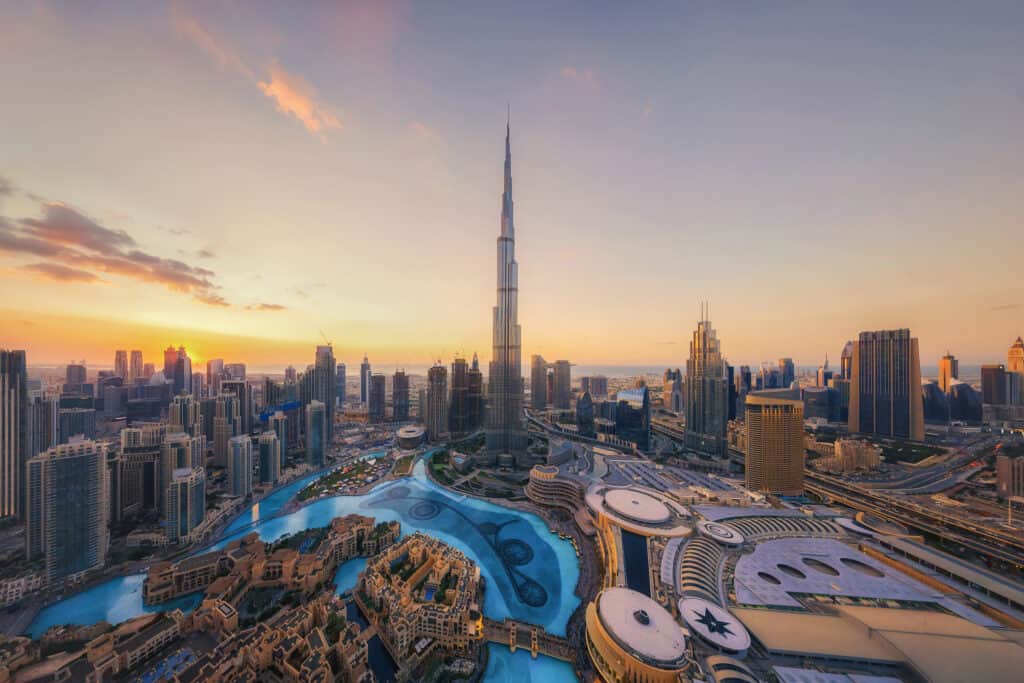
Burj Khalifa is the tallest building in the world and the UAE’s greatest claim to fame.
©Tavarius/Shutterstock.com
The United Arab Emirates is an oil-rich state in the Persian Gulf. In recent decades it has become a global tourist and entertainment center, a magnet for medical tourism, and even has a burgeoning space program.
63. United States (1783)

The British Empire founded 13 colonies on the coast of North America.
©I. Pilon/Shutterstock.com
Britain ruled its American colonies for nearly 200 years. An unwillingness to share decision-making related to the colonies led to a successful revolution and an independent United States. After World War II, the U.S. became the successor to Great Britain as the world’s leading military and economic power.
64. Yemen (1967)
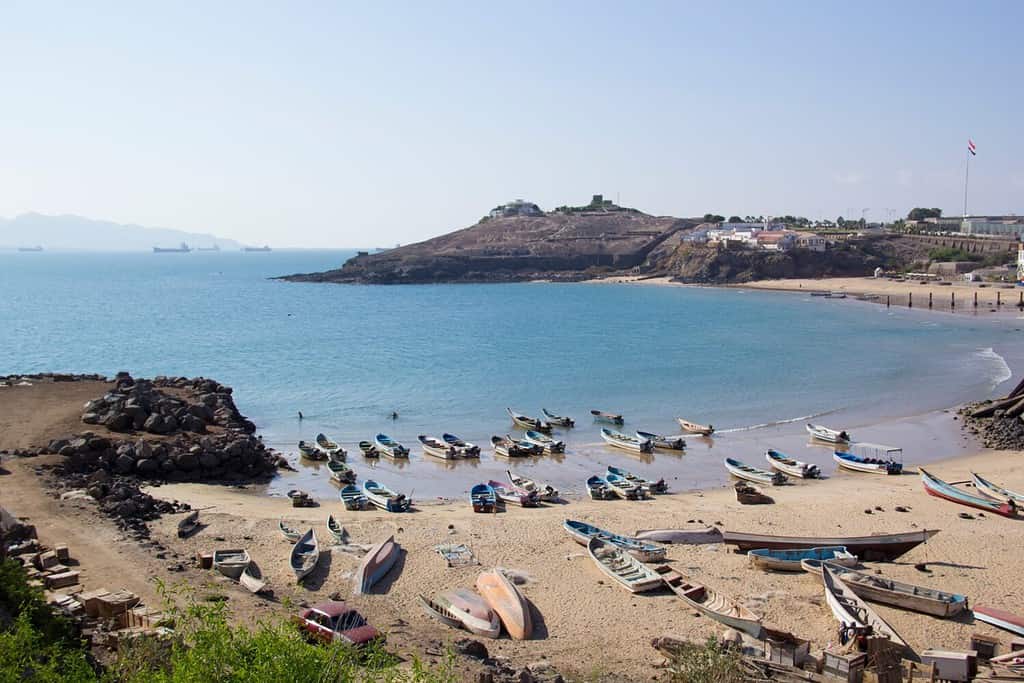
The coastal city of Aden was a strategically important port for the British Empire in the Indian Ocean.
©MarinaDa/Shutterstock.com
Britain colonized only the southern part of Yemen with the strategic port of Aden. After independence, a civil war divided the country in two. They reunited in 1990 but are currently embroiled in another civil war that has involved neighboring Saudi Arabia.
65. Zambia (1964)
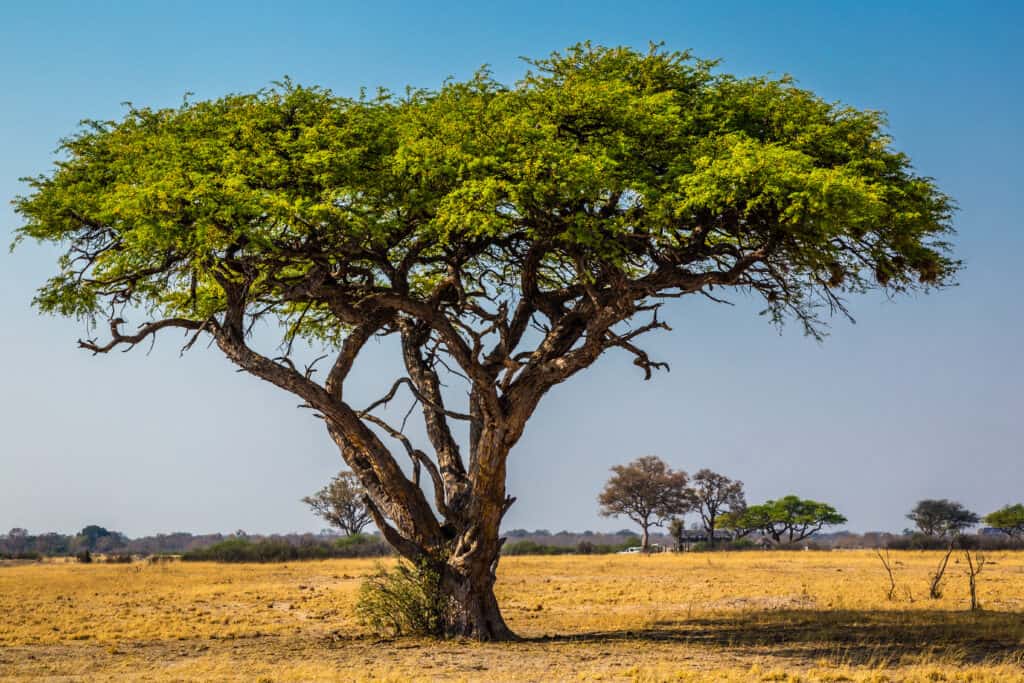
The acacia is one of the iconic trees providing some shade and shelter for wildlife in Zambia.
©LizCoughlan/Shutterstock.com
Zambia is a landlocked country in southern Africa, famous for its abundant wildlife. The massive Victoria Falls is located on its border with Zimbabwe.
66. Zimbabwe (1980)
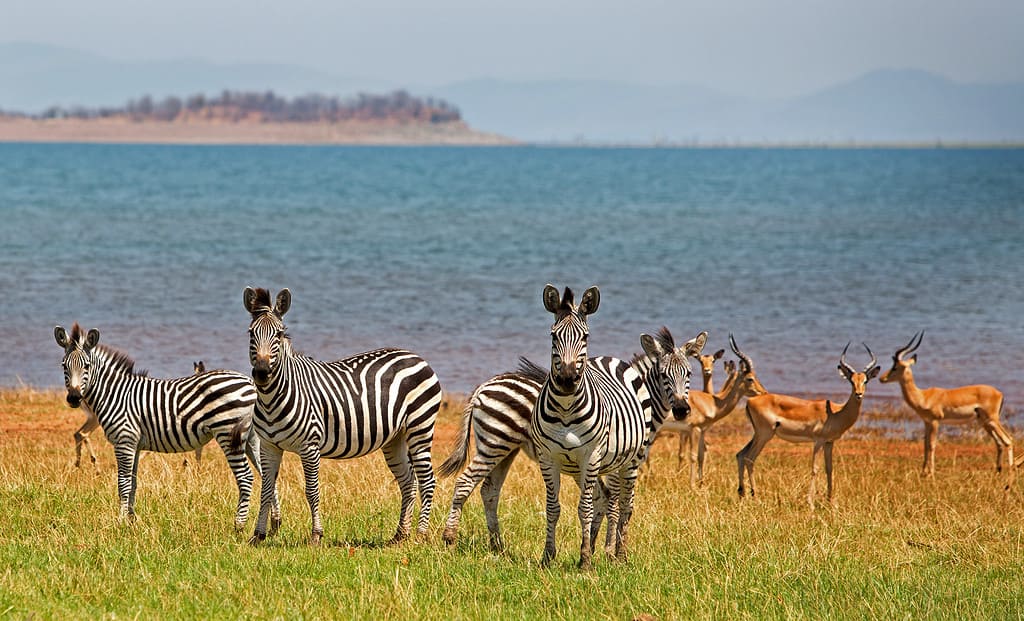
Zimbabwe’s national parks attract tourists to see popular wild species such as zebras.
©iStock.com/paulafrench
Rich in wildlife and natural beauty, Zimbabwe has still suffered a great deal in its history from poverty and social unrest. About half the country’s population lives in extreme poverty, suriving on less than $3.20 a day.
The photo featured at the top of this post is © Alexander Lukatskiy/Shutterstock.com
Thank you for reading! Have some feedback for us? Contact the AZ Animals editorial team.






